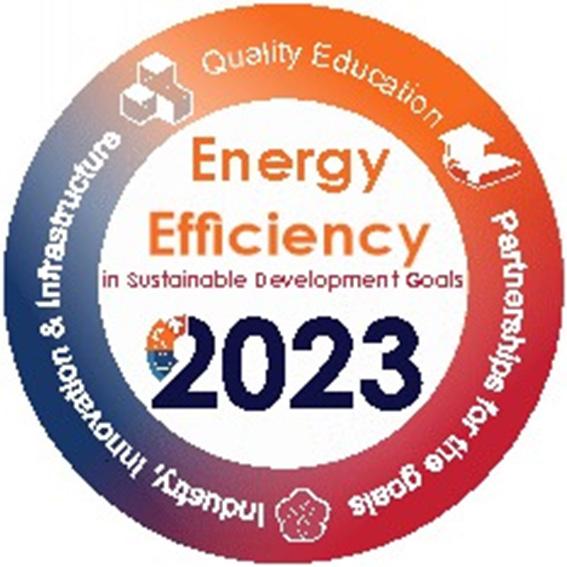ISSUE 13
RSA R45.00

INSIDE
The African Development Bank’s new report calls for bold policy actions How Africa can capitalise on its mineral wealth to develop an electric vehicle value chain

ISSUE 13
RSA R45.00

The African Development Bank’s new report calls for bold policy actions How Africa can capitalise on its mineral wealth to develop an electric vehicle value chain


Try and try again Entrepreneurs know that failure is sometimes necessary —here’s what we can learn from it

The president of IRMSA is helping to make a difference in how risk management is perceived both in South Africa and globally
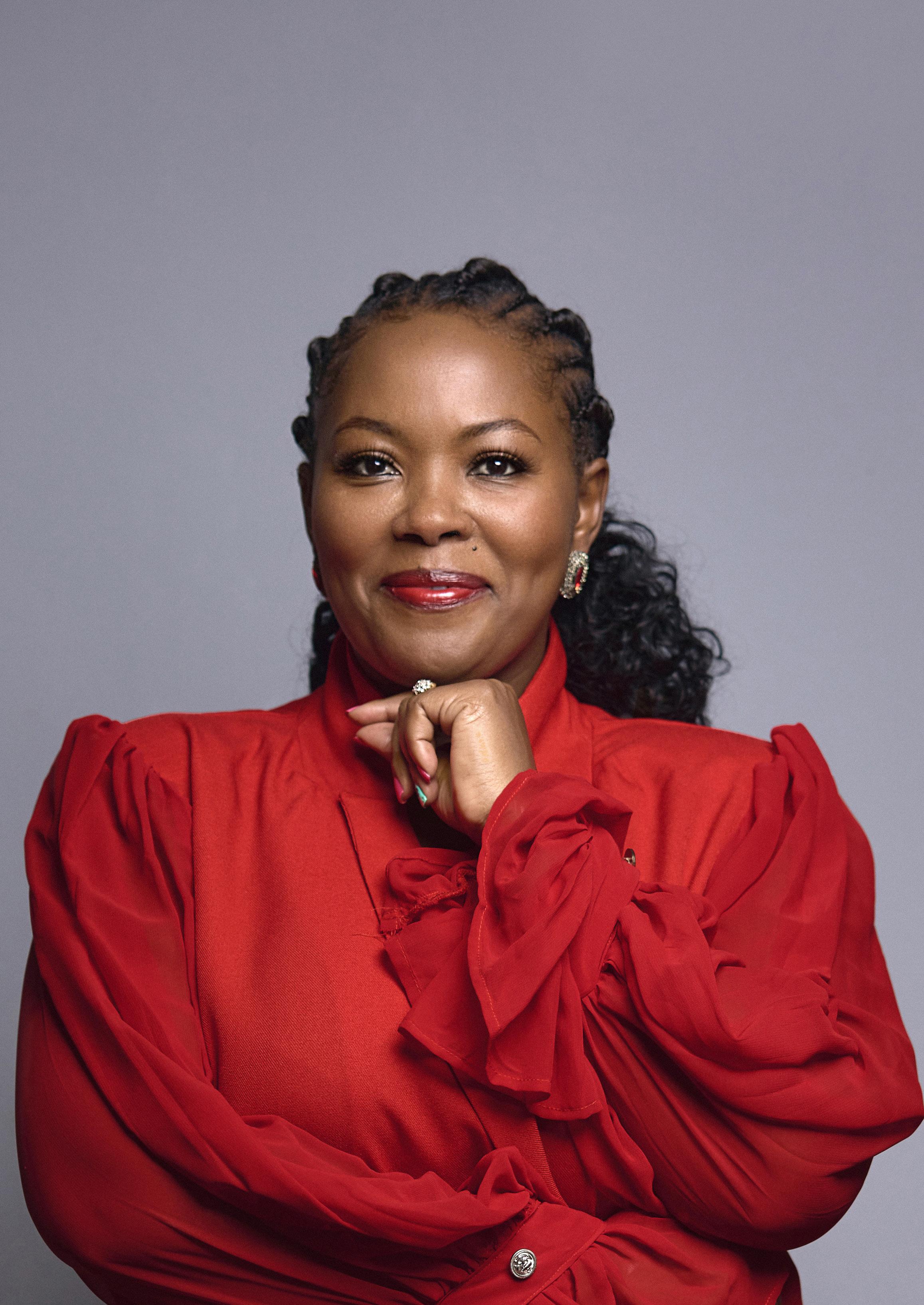
Reliable measurements are vital not only to verify that products and services comply with the legislation that exists to protect the consumer and our environment but also to support trade and industry. Reliable measurements in analytical testing laboratories can only be achieved through the use of accurate measurement standards also known as reference materials (RMs).
The National Metrology Institute of South Africa (NMISA) established its reference material production facility to provide laboratories with Africarelevant RMs. These RMs are used for quality control, method validation and to establish measurement traceability. The use of RMs and regular participation in proficiency testing allows laboratories to demonstrate continued analytical competence.

The Reference Material Production Facility is equipped with state-ofthe-art equipment that allows the Institute to process diverse materials according to the requirements of the international standard ISO 17034 for reference material producers. The various equipment available in the facility makes it possible for the Institute to mill, mix, sieve, freeze-dry and package different materials in suitable packaging for an extended shelf-life, and store them in temperature-monitored refrigeration facilities.
NMISA is a leading National Metrology Institute (NMI) in Africa.
We shorten the traceability chain for NMIs on the continent, by providing excellent and internationally recognised quality-certified RMs. Through this facility, the Institute aims to enable fair trade by ensuring labs that are involved in testing and calibration have access to our reference materials which are sustainable, affordable and easily accessible.
The showcase instrument in the reference material production facility is the patented Resodyn Resonant Acoustic Mixer ™ (RAM) 5, possessing multiple functional benefits over other traditional mixers. This production-scale state-of-the-art technology is designed to mix notoriously difficult substances without the need for impellers or agitators. The RAM uses sound energy to effectively and efficiently process powders, pastes, liquids, and combinations thereof with breakthrough speed,
The
(RAM) 5 uses sound energy to process powders, pastes, liquids, or combinations thereof effectively and efficiently with breakthrough speed, quality and repeatability.
quality and repeatability. The RAM 5 is complemented by a laboratoryscale benchtop mixer, the LabRAM II unit, which is used for visualising the mixing behaviour of materials, during small-scale research and testing. The mix parameters can then be scaled up to the RAM 5 for pilot-scale production. Materials produced here, are analysed by the NMISA materials characterisation unit, where a host of analytical techniques such as Scanning Electron Microscopy and Xray Photoelectron Spectroscopy (XPS), Particle Size Distribution (PSD) and Xray Diffraction (XRD) are applied.
One of the many benefits of the RAM 5 is that it uses less energy, making it a green technology. Fundamentally, this machinery uses low-frequency (sound) waves to achieve resonance and once this is achieved, it requires less energy to mix chemicals. It is built on flexible and universal processing options like vacuum,
Resonant Acoustic Mixertemperature control, and customised mixing vessels. The other benefit is that it does not, like other mixers, have blades. This means it does not have a lot of contact with the material whilst mixing. It, therefore, does not require a lot of cleaning, making it easy to maintain.
The applications of this technology are endless. This mixing technology can benefit, among others, the nanotechnology, pharmaceuticals, mining and energy sectors. Its advantages extend to a myriad of uses and applications such as dental products, batteries, ceramics, lubricants, pigments, adhesives, sealants and advanced materials to list but a few.
The technology can contribute significantly to the cosmetics space, especially the essential oils market, making it easy for clients to blend their essential oils with other materials such as moisturisers and creams or blends with other oils. This is further supported by NMISA’s essential oils testing services offered through the Africa Reference Institute. The ARI provides supporting information about the material that has been tested and the content of the test certificates. In this instance, clients can benefit from more than just using the acoustic mixer. There are also services available to bottle and label these products, as the production facility label printer complies with the Globally Harmonized System of Classification and Labelling of Chemicals (GHS).
Various Industries are supported including:
• Additive Manufacturing
• Adhesives and Sealants
• Advanced Polymer Systems
• Batteries
• Biotechnology
• Ceramics
• Chemicals
• Cosmetics
• Dental Products
• Electronics Materials
Since the acquisition of the technology in 2017, NMISA has found great value in contributing to fields such as feed additives, predetonation mixes and biofuels. For the most part, the Institute has been using the technology which provides the best performance in terms of homogeneity and reproducibility for reference materials production.

NMISA prides itself on being a “one-stop shop” for metrology services in Africa. Not only can the Institute prepare and mix products for clients through the reference material production facility, but it can also meet clients’ additional needs for calibration and analysis through other services from the Physics and Electromagnetism (PEM) and Chemistry, Materials and Medical Metrology (CMM) divisions. Analysis and calibration training is provided through our recently established Training Centre.

• Energetics: Explosives
• Energetics: Propellants
• Energetics: Pyrotechnics
• Lubricants
• Nano-Materials
• Pharmaceuticals
• Pigments
• Sintered Materials
As an entity funded by the Department of Trade, Industry and Competition (the dtic), NMISA recognises the importance of making these technologies available to all potential users that would otherwise not have access due to cost and infrastructure constraints. This enables NMISA to assist potential users to develop innovative products that they otherwise may not have been able to. Access to NMISA’s technology also means access to the Institute’s skills and expertise, providing a boost to entrepreneurs and Small and Medium-sized Enterprises (SMEs) in South Africa and on the continent. African countries no longer need to turn to international partners when these measurement solutions are available in South Africa
NMISA remains dedicated to supporting trade and industry, enabling new product development and manufacturing, supporting entrepreneurs and SMEs, creating employment and enhancing the African economy. Contact us at ReferenceMaterials@nmisa.org to find out how our measurement solutions can benefit you.
The Resonant Acoustic Mixer (RAM) 5 LabRAM II acoustic mixerWelcome to the inaugural African Business Awards, South Africa’s premier awards for leaders & businesses in South Africa. The result is that committed South Africans, from across all sectors, are motivated to pursue equally impressive success. All individuals and organizations are honored for their contribution to the South African economy.






8 FROM THE EDITOR
Please your star player
10 MEET UP
Rub shoulders and conduct business with the high-flyers in African business

16 BUSINESS TRAVEL: BACK IN .THE AIRPLANE SEAT
Companies and individuals should consider the changed playing field before resuming business travel full throttle
20
Risk professionals need to continuously assist their organisations in identifying what potentially lies ahead: risks (threats and opportunities), prepare them to respond and navigate through disruptions, and accelerate their organisations out of disruptions and launch them into the new reality. The Institute of Risk Management South Africa is dedicated to the advancement and practice of the risk management profession and accreditation. Its president Thabile Nyaba is helping to make a difference in how risk management is perceived both in South Africa and globally.
RENEWABLE ENERGY: UNDER THE SUN
Solar mini grids could power half a billion people by 2030—if action is taken now
24 GAS: SETTING SAIL
The MSGBC region’s first hydrocarbon production is officially drawing near, opening up new opportunities for broader economic growth

28
OIL: SCRAPING THE BARREL
Why peak advantage is the defining upstream challenge of our time
32
How Africa can capitalise on its mineral wealth to develop an electric vehicle value chain
36 SUPPLY CHAIN: MATERIAL IMPACT
Supply chain management in Africa needs a rethink. COVID-19 changed everything—or did it?


40
SKILLS DEVELOPMENT: EMPOWER THE PEOPLE
Addressing skills shortages in the South African renewable energy sector
44 TRANSPORT: CLIMATE-FRIENDLY RIDES

eWAKA is spearheading sustainable mobility to enhance Africa’s economic prospects by harnessing the power of electric vehicles
48
HUMAN CAPITAL: CULTURE CHANGE
How to keep your hybrid teams in a toward (engaged) state and switched on
52 INFRASTRUCTURE: WHO WILL WIN
Africa’s ports race is hyped as ‘development’, but also creates pathways for plunder
68
56 ECONOMICS:
The African Development Bank’s new report calls for bold policy actions to help African economies mitigate compounding risks
60 BANKING & FINANCE: TAKE INTO ACCOUNT
Digital banking is the in-thing, but it excludes many users in Tanzania and Senegal


64 ENTREPRENEURSHIP: TRY AND TRY AGAIN
Entrepreneurs know that failure is sometimes necessary—here’s what we can learn from them
68
MANUFACTURING: RISE OF THE MACHINES
What employees think about the consequences of automation and increased use of robots

72 AGRICULTURE: MORE GROWTH .REQUIRED
Digital solutions are boosting agriculture in Kenya, but it’s time to scale up
76
Kenya and South Africa offer insights into digital economy challenges and alternatives
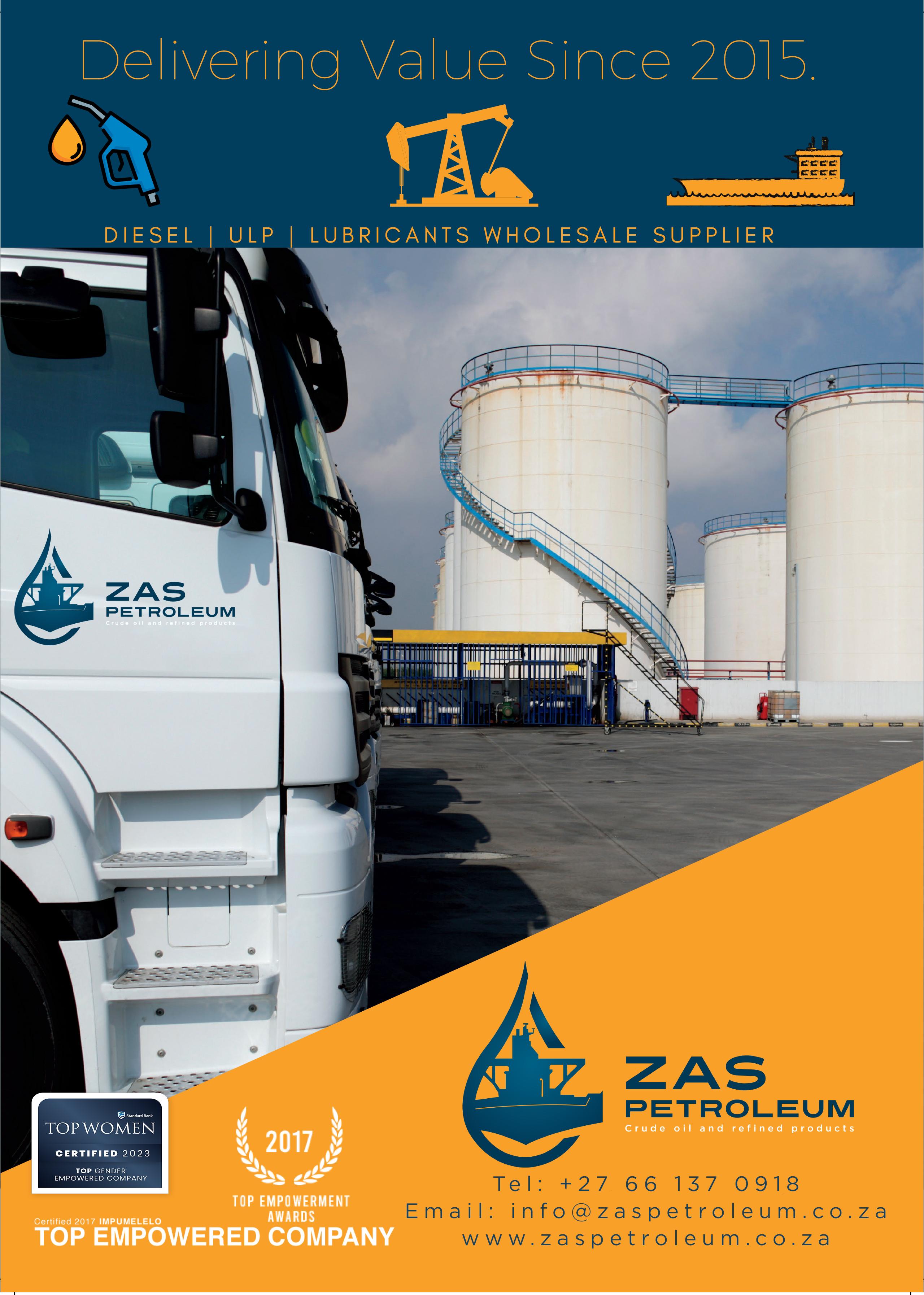


Welcome to African Business Quarterly 13, our first edition for 2023. How time has flown. It seems just an instant ago we were ringing in the new year. Yet, here we are in March, approaching the end of the first quarter.
It has been a frenetic time as deadlines have had me hopping. Fortunately, I’ve been able to slip in some downtime with relaxing weekends away—they are a buffer against the ravages of the stresses of today’s fast-paced world.
Alas, weekends don’t last, and soon it’s back once again to deadlines, meetings and interviews in short order. However, my short breakaways not only help refresh me but also remind me that once in a while we need to take a step back from our busy lives. As South Africans, we face daily pressures (stage 6 loadshedding, among others) and often forget to take care of our health and maintain the work-life balance.
As American stand-up comedian Katt Williams said, “you got to please your star player”—that’s the person in the mirror, YOU. There are enough haters out there looking to do you dirty. So this year, take control and blossom.
I wish you all a prosperous and fulfilling 2023.
PUBLISHER
MANAGING EDITOR
COPY-EDITOR DESIGN
EDITORIAL SOURCES
Donovan Abrahams
Ashley van Schalkwyk ashley@avengmedia.co.za
Tania Griffin
tania@avengmedia.co.za
Christine Siljeur
Kauthar Renamé
TheConversation.com
AfDB, World Bank Group Energy Capital & Power Enel Green Power SA
Kaspersky SA, eWAKA

Wood Mackenzie
Brian Eagar, NJ Ayuk
PHOTOGRAPHIC SOURCES
PROJECT MANAGER
ADVERTISING SALES
Adobe Stock

Donovan Abrahams

Lunga Ziwele
Viwe Ncapai
Carl Chothia
Andre Evans
Charlton Peters
Mphumzi Njovana
ACCOUNTS
CLIENT LIAISON
ONLINE CO-ORDINATORS
HR MANAGER
PRINTER
DISTRIBUTION DIRECTORS
PUBLISHED BY
Benita Abrahams Bianca Alfos
Majdah Rogers
Majdah Rogers
Ashley van Schalkwyk
Freddy Shikwambana
Colin Samuels
Print on Demand
www.abizq.co.za, issuu.com
Donovan Abrahams Colin Samuels
Aveng Media
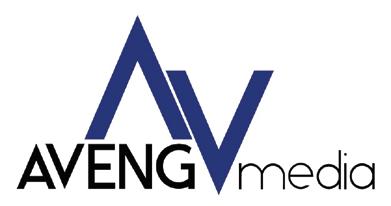
ADDRESS: Boland Bank Building, 5th Floor, 18 Lower Burg Street, Cape Town, 8000 Tel: 021 418 3090 | Fax: 021 418 3064
Email: majdah@avengmedia.co.za
Website: www.avengmedia.co.za

DISCLAIMER:
© 2023 African Business Quarterly magazine is published by Aveng Media (Pty) Ltd. The Publisher and Editor are not responsible for any unsolicited material. All information correct at time of going to print.
The Southern African Gas Association ensures persons working in the natural gas, liquid fuels and biogas environment are trained and competent to undertake work which complies with the local regulations and health and safety standards in order to provide safe and efficient operations from point of supply to users in the residential, commercial and industrial markets within Southern Africa. Covers applications in Industrial Thermoprocessing (TPE), Compressed Natural Gas (CNG), Liquified Natural Gas (LNG), Biogas, Liquid Fuels, Natural Gas Vehicles (NGV) and Fuelling Stations
The Southern African Gas Association ensures persons working in the natural gas, liquid fuels and biogas environment are trained and competent to undertake work which complies with the local regulations and health and safety standards in order to provide safe and efficient operations from point of supply to users in the residential, commercial and industrial markets within Southern Africa. Covers applications in Industrial Thermoprocessing (TPE), Compressed Natural Gas (CNG), Liquified Natural Gas (LNG), Biogas, Liquid Fuels, Natural Gas Vehicles (NGV) and Fuelling Stations.
1. Establishing bilateral agreements
1. Establishing bilateral agreements
2. Representation at the SADCSTAN
2. Representation at the SADCSTAN


3. Collaboration with Government and Industry Stakeholders on Regulations, Health and Safety Standards
3. Collaboration with Government and Industry Stakeholders on Regulations, Health and Safety Standards
4. Ensuring safety through training and skills development
4. Ensuring safety through training and skills development
5. Ensuring competent persons licenced to work on gas
5. Ensuring competent persons licenced to work on gas
6. Practical assessments of competencies and compliance requirements for gas systems; installation, operations, maintenance, commissioning, start-up and shut down activities and much more. . .
6. Practical assessments of competencies and compliance requirements for gas systems; installation, operations, maintenance, commissioning, start-up and shut down activities and much more. . .
www.sagas.co.za

Equipment Safety
Compliance verification of equipment used in natural gas, liquefied petroleum gas (TPE applications), liquid fuels and biogas industrial applications, locally manufactured, imported or supplied prior to being placed in the market Includes NGV, CNG/LNG industrial and fuelling stations
Compliance verification of equipment used in natural gas, liquefied petroleum gas (TPE applications), liquid fuels and biogas industrial applications, locally manufactured, imported or supplied prior to being placed in the market Includes NGV, CNG/LNG industrial and fuelling stations
Preventing the supply and installation of sub-standard equipment.
16 & 17 March
Cape Town International Convention Centre, South Africa
www.gtreview.com
Over two days, this one-of-a-kind event will welcome around 650 participants from the region’s trade, commodity and export finance community. Delegates will gain unrivalled insights into the latest trends and developments impacting African trade, export and infrastructure financing through an extensive programme of more than 60 expert speakers, while the exhibition hall will provide an invaluable opportunity for participants to network and connect with industry leaders, peers and potential clients.
28 & 29 March
Kigali Convention Centre, Rwanda
microfinancetechsummit.com
Microfinance is considered a tool to alleviate poverty in Africa, as it contributes a big percentage toward access to finance for many Africans. This summit aims to create and strengthen bonds between microfinance institutions and technology companies, bringing them together along with more than 500 of the most senior representatives from banks, regulators and policymakers.
29 March
2023
Protea by Marriott Hotel Johannesburg Balalaika
Sandton, South Africa
www.mncapitalgroup.com
The Africa ETFs Investment Conference will bring together key institutional investors and asset owners, index providers, ETF issuers, asset managers, exchanges, technology solutions providers, registered investment advisers, academics and more to explore new opportunities for achieving superior investment performance through the utilisation of an ever-expanding array of indexes and tradable index products.
29 & 30 March
Indaba Hotel, Fourways, Johannesburg, South Africa
www.tci-sa.co.za
Financial services firms such as banks, insurance companies, fintechs and other service providers are facing more complex regulations than ever before—making today’s corporate environment more complex and demanding than at any point in history. This conference will focus on bringing the main role-players from banks, insurance companies, financial services, services providers and government together at one forum to discuss and learn how they can tackle the challenges faced by financial institutions on meeting regulatory and reporting requirements. The conference programme will analyse the effect of a change in laws and regulations that could potentially cause losses to your business, sector or market.


29 & 30 March
The Maslow, Sandton, Johannesburg, South Africa
itnewsafrica.com
IoT Forum Africa is the premier African event on the Internet of Things. It will bring together business leaders, government functionaries, IT decision-makers, technology service providers and IoT experts to equip attendees with the knowledge and tools needed to plan and implement successful IoT projects. This year’s topics include: industrial IoT; IoT strategy; Big Data and IoT; smart cities; ethical IoT; and cybersecurity.
24 & 25 May
Cape Town International Convention Centre, South Africa
marketingindaba.com
This popular marketing conference will again inform and inspire the professional marketer as well as those keen to get fresh ideas on marketing their products and services. Delegates will get the opportunity to listen to more than 14 marketers and industry leaders covering an array of current topics of the marketing discipline.














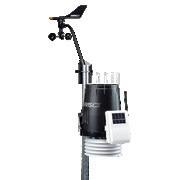




















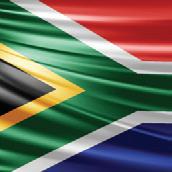
ith the turmoil in the global economy, the political landscape and the fallout from the COVID-19 pandemic, many questions have been raised regarding the value proposition of risk management. This is because seemingly well-run corporates have failed during this period—and are still failing—despite perceived good leadership, good governance, good risk management, compliance and reporting.
The answer is clear: “Leadership can no longer rely on past habits and behaviour to address unprecedented modern crises. They need foresight skills and responsiveness to crisis and disruption. That is why Risk professionals need to continuously assist their organisations in identifying what potentially lies ahead: risks (threats and opportunities), prepare them to respond and navigate through disruptions, and accelerate their organisations out of disruptions and launch them into the new reality. Organisations need to be enabled to respond, adapt and thrive; to create and preserve value as we continue to operate in times of unprecedented risks, uncertainty, and disruptions. Risk management therefore, can no longer be dealt
Wwith in isolation but needs to be integrated with strategy, performance and resilience”
This is where The Institute of Risk Management South Africa (IRMSA) plays a huge role. IRMSA is dedicated to the advancement and practice of the risk management profession and accreditation, through research, promotion, education, upliftment, training, guidance and strong relationships with other institutes and associations. It not only promotes and supports the interest of its members, but also protects the public interest.
It was formed in September 2003 through the amalgamation of the Society of Risk Managers and the South African Risk & Insurance Manager Association. It is the only professional body for risk management in South Africa, recognised as such by the SA Qualifications Authority in 2012—representing individuals and companies committed to the enhancement of the risk management discipline. Since its inception, IRMSA has shown a commitment to ethical and visionary leadership, growing the profession even through the challenges of the recent years.
IRMSA is a member of the International Federation of Risk Management and Insurance Associations (IFRIMA), the international umbrella organisation for risk management associations, representing 20 organisations
and over 30 countries around the world. With its roots going back to the 1930s, and its development through the discipline of insurance and risk management, IFRIMA is uniquely positioned as a leader in risk management and the application thereof, providing a forum for interaction and communication among risk management associations and their members.
IRMSA has a training centre that enables continuous personal development opportunities for the risk management community, and an opportunity to write the IRMSA Board Exams. The institute awards two designations: the Certified Risk Management Practitioner (CRM Prac) as well as the Certified Risk Management Professional (CRM Prof). The IRMSA designation certification ensures a national standard is created and maintained in terms of the competencies and knowledge required from designations. Furthermore, the designations ensure IRMSA continues to uplift risk professionals and the profiles of its members, maintaining a code of conduct for the risk management profession.
The IRMSA Centre of Excellence was established to collaborate with risk professionals and business leaders in both the private and public sectors—including small, medium and micro enterprises (SMMEs)— to transform risk management into a key component of excellent decision-making. By doing so, the institute’s offering includes insights, advice and coaching on how to design, implement and mature risk management in practice through IRMSA’s extensive strategy, risk and resilience knowledge.
As president of IRMSA, Thabile Nyaba is helping to make a difference in how risk management is perceived both in South Africa and globally
We need to evolve as an institute, professional body and profession—and IRMSA does not shy away from responding to these challenges

Thabile Nyaba has been the president of IRMSA since 2020, but was already involved in IRMSA governance structures for five years prior to that appointment. Her overarching goal is to support the IRMSA team, board and other volunteers to continue to grow and develop the organisation for its members— both individuals and organisations. “Continuous learning, unlearning and relearning is key to our future growth, no matter the role one plays within the organisation,” she says.
She is committed to building riskintelligent organisations and has led teams in various organisations that have been voted industry leaders in risk management. She is currently a chief risk officer at Old Mutual Insure as well as the chair of the company’s Women’s Network and Transformation & Responsible Business committee. In addition, she has her own NGO focusing on connecting youth with opportunities.
“I am a woman of many passions and I have my family who keep me grounded—as a Mother, Wife, Sister, Friend and Daughter,” says Nyaba. “My strength is unleashing the greatness in those I serve, using happiness, authenticity and passion.”
Being president of IRMSA, she adds, has allowed her to help make a difference in how risk management is perceived—both in South Africa and now globally, through her recent appointment as a board member of IFRIMA.

In the busy, fast-paced environment of risk management, IRMSA is a pioneering collaboration in addressing the compounding and influential risks. It focuses on building long-term relationships with its stakeholders in the private sector, public sector, academies and SMMEs. “Our stakeholders include all our members and non-members alike, our community of risk professionals and fellows, and all those who offer their expertise and time (for free) to lead and capacitate our varied committees that direct and operationalise IRMSA,” explains IRMSA president, Thabile Nyaba.
What sets IRMSA apart in its field, she says, is that the institute “continuously has the difficult conversation with ourselves, asking and answering the uncomfortable questions to keep us relevant, future-fit and sustainable. As the professional body representing risk practitioners in South Africa and striving to be a thought leader in risk management, consequently, means we need to evolve as an institute, professional body and profession—and IRMSA does not shy away from responding to these challenges,” asserts Nyaba.
2022 was a productive year for IRMSA. Notable among its achievements was the release of its new integrated risk management framework: a thought leadership concept that enables organisations—through the integration of strategy, risk, and resilience—to improve decision-making and respond, adapt, and thrive in uncertainty (irmsa-guideline.co.za).
There was also the publication of the IRMSA Risk Report: South Africa Risks 2022 (www.irmsarisk-report.co.za/2022). “This has become one of IRMSA’s flagship deliverables,” says Nyaba. “The purpose of this report is to allow business leaders to have insights into the risk landscape in which South Africa exists and its people function, to be able to use this information as input into their strategy setting and execution processes, while integrating effective risk management—leading to quality decision-making.”
The next edition of the IRMSA Risk Report, the ninth, will be released in June 2023.
Nyaba says her tenure at IRMSA has been “colourful and fascinating”. “On a personal level, it has provided me with an opportunity to meet and interact with great minds from different business sectors across the country and globally.
On a professional level, she believes that during her tenure IRMSA has been able to demonstrate both agility and adaptability in any situation. She cites a few examples:
“How we responded to one of the worst humanitarian crises impacting the entire world allowed me to put all my leadership and risk management skills into practice. Like most organisations, our operations were impacted, and we had to step up and level up for our members, their organisations and our staff. Between the Exco and Board, we had to be decisive, flexible, agile and be able to adapt to ensure the resilience and sustainability of IRMSA.
“During COVID-19, we were among the first to move all activities onto digital platforms. IRMSA was proud to work with Food Forward SA, supporting this nongovernmental organisation in assisting disadvantaged families with access to food. This initiative also allowed us to introduce a positive community focus into our response strategy and we really appreciated the support we received from members and our staff.
“Our continued growth in volunteers and our ability to support and demonstrate the elevated role of risk management in organisations has been extremely rewarding. I believe business leaders, more than before, appreciate the role of risk management, the insight and support they receive from the risk management profession to better navigate and thrive through and beyond crises/disruptions.”
Nyaba adds that IRMSA’s relationship with the South African government through the Presidency has also been strengthened. IRMSA obtained a special invite to the Forum of South African Directors-General, where it was agreed there would be collaboration in professionalising risk management.
“Overall, during my tenure, we’ve continued to be at the forefront of assisting our members build resilience for their organisations, recrafting risk management to look beyond strategy and performance. We have and continue to navigate through today’s volatile, multifaceted and complex environment. We enable our members to
be forerunners who bring the risk hindsight, insight and foresight to their organisations.”
She feels her biggest responsibility as a leader is to first lead herself through her own personal mastery and “spend more time on the balcony instead of the dance floor” to have a full perspective of what is happening with and around her and the people she leads. “I have also learnt that the highest calling as a leader is to develop and create more leaders.”
Depending on the situation and season, “I lead from the front, sometimes from the side and even from behind in some cases, allowing those I lead to lead in their own areas of expertise while capitalising on their strengths. I always aspire to create an enabling working environment for people to excel while also having fun. My motto is, ‘show me your team and I will tell you what kind of leader you are’.”
Nyaba has a passion for people. She describes it as having a “gift” that enables her to get the best out of people—and this has provided her with much satisfaction over the years. “Mentoring youngsters and great talent within the risk management fraternity, guiding and connecting them with others in our profession and supporting them through growth opportunities is so rewarding.”
How is Nyaba ensuring IRMSA is futureready and remains at the top of its game? She says recent years have proven that risks are interconnected and don’t occur in silo; they break through predefined areas of expertise and responsibilities, yet also bringing opportunities. “This means we need to continue and be relentless in the technical support we offer our risk management community to enable it to be relevant in practice and application of risk management. Similarly, to our aspiring risk professionals, we need to continuously enhance and develop our offerings and qualification to ensure we produce risk professionals who are equipped to manage evolving threats and opportunities.”
She concludes, “All this calls for a team that is agile, innovative and solutionsoriented, and this is top of mind in building on to our culture. IRMSA is relevant to helping modern organisations overcome realworld risks and challenges in meeting their business objectives.”
To find out how you can become a member of IRMSA, visit www.irmsa.org.za/page/membership.
IRMSA believes that integrating strategy, risk, and resilience improves decision-making.
Companies and individuals should consider the changed playing field before resuming business travel full throttle


“The approach to post-pandemic business travel should be as considered as the time and effort invested in return-to-office strategies.”
Travelling for business—locally and globally—is starting to pick up rapidly again in the wake of the pandemic, as companies once more start dispatching employees to the in-person conferences, events and meetings that were the normal order of business pre-2020.
However, business travel and its impact on the traveller have changed from the way things were before, and anyone embarking on a business trip for the first time in years should take heed of changed circumstances and impacting factors so as not to get caught short, a leadership expert says.
“Most business travellers can attest to a little bit of shock to the system during their first couple of trips and in-person events—and that it is not just a case of getting on the bicycle again, with muscle memory making the ride a smooth one,” says Advaita Naidoo, Africa managing director at Jack Hammer Global, Africa’s largest executive search firm.
She says companies and individuals travelling would do well to consider the changed playing field before resuming business travel full throttle, as it can mean the difference between a successful mission or a waste of time and money.
“The approach to post-pandemic business travel should be as considered as the time and effort invested in return-tooffice strategies. We are still in the try-out phase of best practice in terms of hybrid working, and now business travel is also being thrown into the mix.
“The factors that impacted the return to the office also come into play when making decisions about business travel,” Naidoo continues. “Take, for instance, the personal ecosystems and logistics of the business traveller. Previously, frequenttraveller working parents for the most part would have had a smooth-running machine back home to ensure children were taken care of while they were away. Chances are, circumstances have changed, and support systems may no longer be there, or of the same quality they were before.”
The cardinal rule of getting back in the business travel swing of things is to allow more time than before—from planning to execution, adds Naidoo.

She says the following considerations should be taken into account by companies and employees:
Planning a successful trip is harder than before. Internationally, regulations have become more onerous, while across the board the lay of the land can change at the drop of a hat. Flights may be cancelled without warning, airport staffing may be inadequate, delays may mean connecting flights are missed, and rules and regulations for entry to a country may change regularly. So plenty of time should be allowed to plan a trip in detail, while allowing more time for the actual travel should challenges arise. Additionally, having a dedicated and alwayson travel agent is advisable in today’s volatile travel market.
Companies must be sensitive to the current circumstances of their ambassadors. It is not fair to assume that a previous star representative may be as happy as before to spend days and weeks away from home, or can be sent abroad with only days’ notice. It is important to get input from people before they receive travel assignments, to consider what support they may require to ensure a successful trip.

Seasoned business travellers previously were able to catch that early morning flight effortlessly, land at their destination, catch the necessary transport to their meeting or
conference, and proceed to shoot the lights out networking or presenting to among tens, hundreds or thousands of people on behalf of their company.
It is ludicrous to assume the same level of efficiency and performance at this stage, not only because the trip itself is likely to be much more onerous, but also because inperson networking is a muscle that has lost its strength as a result of three years of Zooming and Teamsing.
Allowing additional time for transitioning from the travel leg to the networking leg is helpful if possible—and, just the understanding beforehand that the experience may be exhausting and challenging is helpful to put the attendee in a better and more realistic frame of mind.
“Just like we have recognised that seeing our colleagues in-person for particular activities has benefits that can’t be replicated if we all just work remotely forever, so it is important that we again meet our peers and business partners outside our computer screens for conferences and meetings. Sure, transactions can be concluded on screen, but relationships most definitely are built in person,” says Naidoo.
“Getting back to business travel is, however, a matter that requires more than just the booking of a plane ticket and registration for the event at this stage. But knowing what you’re up against, planning more carefully than before, and cutting yourself some slack when navigating the first few trips as a company and as a traveller will help smooth the path toward normalcy again.”
We have a range of in house developed and tested products from Bituminous emulsion binders to blended Lignosulphonates and Polymers

than 40 years of experience in Total Dust Management. Our Total Dust Management services include dust and road management for opencast and underground mines, treating in excess of 13 000 000m² of mine haul roads. We offer full dust suppression services for material handling applications.


TOTAL DUST MANAGEMENT
Our Dust Control Management System consists of a range of environmentally friendly dust suppression products, with a comprehensive stabilization and continuous maintenance programme catering to our pit port requirements.
The robust sealed haul road surfaces allow optimal production for haul trucks and other vehicles to operate safely in all weather conditions. This is achieved with greater fuel efficiency, safety, and mechanical wear. Water saving remains one of the biggest benefits in employing Dust-A-Side and in excess of 90% saving has been recorded on certain mines
WHY CHOOSE US
A safer working environment | Effective dust suppression | >90% water savings

Reduced rolling resistance | Decreased diesel consumption | Increased tyre life


Improved hauling cycle time | Reduction of HME repairs and maintenance budget
No recapping required | Reduced production downtime after rain
No investment in road maintenance equipment | Increased productivity
Proven return on investment (ROI)
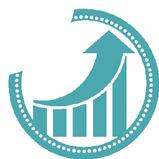

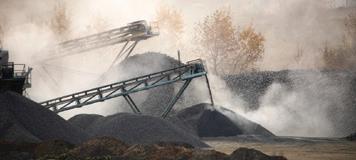

Dust-A-Side have a complete range of dust suppression products to provide the most operationally and cost effective solution across any operation. They can be used – effectively and economically – in a wide range of applications such as semi-permanent roads, temporary roads, underground work areas, process plants, transfer points, stockpiles, rail veneering, construction sites and more.

THERE ARE TWO DISTINCT PHILOSOPHIES TO CONTROL DUST WITH WATER SPRAYERS DURING MATERIALS HANDLING PROCESS
PLANT & PROCESSING
Dust Suppression Systems
Fog Cannon Technology Stockpile Sealing
UNDERGROUND MINING

Haul Roads
Dust Suppression Systems
Before you decide on a dust control system it is important to understand the difference between a dust prevention and dust suppression system. A lot of operations will require both, however the performance of the overall system and the effectiveness of controlling dust will be determined by whether or not the system is configured for your specific needs.
1. Low pressure (< 10 bar) and high water volume systems can be employed. This treatment philosophy is referred to as dust prevention. The spray system will discharge water directly on the material at the beginning of the transfer point. Being low pressure, the flow of water and droplets sizes are much bigger and hence referred to as wetting systems.
2.On the other hand, dust suppression systems (also known as misting systems) employ high pressure (> 50 bar) and low volume of water in the form of a fine atomised mist to capture dust that is already airborne and bring it back to the source.
Dust suppression and dust prevention systems are not exclusive; many operations have both systems configured to effectively control dust.
While dust prevention can be used in materials handling operations, dust suppression is the preferred option, owing to low water consumption, especially in areas where water is scarce. This option also minimizes water addition to material.
Dust-A-Side
FOG CANNON SYSTEMS FOR MINING AND INDUSTRIAL PROCESSES
Fog cannons (sometimes known as mist cannons) are an effective option for dust suppression in mine sites, quarries, construction sites, demolition sites and other industrial areas. This is because they can be easily setup, are portable and are ideal for tackling visible dust.
A fog cannon pumps highly pressurised water through a series of jet nozzles, turning water into mist through atomisation which is dispersed through the air by a powerful fan.
BENEFITS OF USING DUST-A-SIDE
FOG CANNONS
- Very effective at supressing airborne dust
- Significant reduction in water usage compared to low pressure watering systems

- Ensures coverage of large areas












- Easy to install and position
- No harsh chemicals are released into the environment
Menlyn Piazza 2nd Floor, Cnr Glen Manor and Lois Avenue, Menlyn, Pretoria, 0063, RSA +27 (0) 12 648 8900 | info@dustaside.com


Solar mini grids could power half a billion people by 2030—if action is taken now

Solar mini grids have become the leastcost way to bring high-quality 2 4/7 electricity to towns and cities off the grid or experiencing regular power cuts.


Solar mini grids can provide high-quality uninterrupted electricity to nearly half a billion people in unpowered or underserved communities and be a least-cost solution to close the energy access gap by 2030. But to realise the full potential of solar mini grids, governments and industry must work together to systemically identify mini grid opportunities, continue to drive costs down, and overcome barriers to financing, says a new World Bank report.
Around 733 million people, mostly in sub-Saharan Africa, still lack access to electricity. The pace of electrification has slowed down in recent years, due to the difficulties in reaching the remotest and most vulnerable populations, as well as the devastating effects of the COVID-19 pandemic. At the current rate of progress, 670 million people will remain without electricity by 2030.
“Now more than ever, solar mini grids are a core solution for closing the energy access gap,” says Riccardo Puliti, Infrastructure vice-president at the World Bank. “The World Bank has been scaling up its support to mini grids as part of helping countries develop comprehensive electrification programmes. With $1.4 billion across 30 countries, our commitments to mini grids represent about onequarter of total investment in mini grids by the public and private sector in our client countries.
“To realise mini grids’ full potential to connect half a billion people by 2030, several actions are needed, such as incorporating

mini grids into national electrification plans and devising financing solutions adapted to mini grid projects’ risk profiles.”
The deployment of solar mini grids has seen an important acceleration, from around 50 per country per year in 2018 to more than 150 per country per year today, particularly in countries with the lowest rates of access to electricity. This is the result of falling costs of key components, the introduction of new digital solutions, a large and expanding cohort of highly capable mini grid developers, and growing economies of scale.
Solar mini grids have become the leastcost way to bring high-quality 24/7 electricity to towns and cities off the grid or experiencing regular power cuts. The cost of electricity generated by solar mini grids has gone down from $0.55/kWh in 2018 to $0.38/kWh today. Modern solar mini grids now provide enough electricity for life-changing electric appliances such as refrigerators, welders, milling machines or e-vehicles.
Mini grid operators can manage their systems remotely, and paid-smart meters enable customers to pay as they use the electricity.
Connecting 490 million people to solar mini grids would avoid 1.2 billion tonnes of carbon emissions.
Further acceleration is needed, however, to meet Sustainable Development Goal 7. Powering 490 million people by 2030 will require the construction of more than 217 000 mini grids at a cumulative cost of $127 billion. At current pace, only 44 800 new mini grids serving 80 million people will be built by 2030, at a total investment cost of $37 billion.
Produced by the World Bank’s Energy Sector Management Assistance Programme, the new handbook, Mini Grids for Half a Billion People: Market Outlook and Handbook for Decision Makers (bit.ly/3CILvZW), is the World Bank’s most comprehensive and authoritative publication on mini grids to date.
It identifies five market drivers to set the mini grid sector on a trajectory to achieve full market potential and universal electrification.
• Reducing the cost of electricity from solar hybrid mini grids to $0.20/kWh by 2030, which would put life-changing power in the hands of half a billion people for just $10 per month;
• Increasing the pace of deployment to 2 000 mini grids per country per year, by building portfolios of modern mini grids instead of one-off projects;
• Providing superior quality service to customers and communities by providing reliable electricity for 3 million incomegenerating appliances and machines, and 200 000 schools and clinics;
• Leveraging development partner funding and government investment to ‘crowd in’ private-sector finance, raising $127 billion in cumulative investment from all sources for mini grids by 2030; and
• Establishing enabling mini grid business environments in key access-deficit countries through light-handed and adaptive regulations, supportive policies, and reductions in bureaucratic red tape.
World Bank Group
www.worldbank.org
The National Energy Regulator of South Africa (NERSA) ensures the orderly development of the energy sector, mainly through licensing, setting and approving of prices and tariffs, compliance monitoring and enforcement, and dispute resolution in the electricity, piped-gas and petroleum pipelines industries.

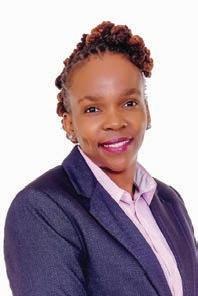







NERSA endeavours to be more innovative and agile in ensuring that we continue to make a valuable contribution to the socio-economic development and prosperity of the people of South Africa, by regulating the energy industry in accordance with government laws, policies, standards and international best practices in support of sustainable development.
NERSA is a regulatory authority established as a juristic person in terms of section 3 of the National Energy Regulator Act, 2004 (Act No. 40 of 2004).

NERSA’s mandate is to regulate the electricity, piped-gas and petroleum pipelines industries in terms of the Electricity Regulation Act, 2006 (Act No. 4 of 2006), Gas Act, 2001 (Act No. 48 of 2001) and Petroleum Pipelines Act, 2003 (Act No. 60 of 2003).


NERSA’s mandate is further derived from written government policies and regulations issued by the Minister of Mineral Resources and Energy. NERSA is expected to perform the necessary regulatory actions in anticipation of and/or in response to the changing circumstances in the energy industry.



The Minister of Mineral Resources and Energy appoints Members of the Energy Regulator, comprising Part-Time (Non-Executive) and Full-Time (Executive) Regulator Members, including the Chief Executive Officer (CEO). The Energy Regulator is supported by staff under the direction of the CEO.

The MSGBC region’s first hydrocarbon production is officially drawing near, opening up new opportunities for broader economic growth
Image source: www.bp.com/fr_mr/mauritania/home.html


A new era of energy security is in sight for the region at a time when global markets are in a constant state of volatility
Project partners bp and Technip Energy announced at the start of 2023 that the floating production, storage and offloading (FPSO) vessel officially left China, heading toward the Greater Tortue Ahmeyim (GTA) development on the maritime border of Senegal and Mauritania.
The MSGBC (Mauritania, Senegal, The Gambia, Guinea-Bissau and Guinea-Conakry) region’s first hydrocarbon production is officially in sight, signalling new opportunities for widespread economic growth on the back of energy security and industrialisation.
On 20 January, the FPSO vessel officially left China, bound for Senegal and Mauritania via Singapore. Its departure from China followed three years of construction and successful sea trials, with the facility—comprising eight processing and production modules and measuring 270m in length, 54m in width and 31.5m in depth—set to accommodate 140 people onboard while processing gas for the GTA’s associated floating liquefied natural gas (LNG) facility.
Rahman Rahmanov, bp’s vice-president of Projects for Mauritania & Senegal, said: “We are developing one of the world’s most unique and innovative gas projects, and the FPSO forms one of the most important components. Achieving the successful sail-away of the GTA Phase 1 FPSO is a testimony to the tremendous partnership with our contractors Cosco Shipping and Technip Energies.”
Representing a critical part of the wider GTA development, the FPSO vessel (bit.ly/3Hs4JGA) will enable the processing of up to 500 million standard cubic feet of gas, as well as the production of 2.3 million tonnes of LNG per annum (mtpa) as part of the GTA’s first phase of development. In its second phase, this figure will increase twofold, with up to 10mtpa set to be produced.
Speaking to the achievement, Gordon Birrell, executive vice-president of Production and Operations at bp, stated: “This is a fantastic milestone for this important project,
which is a great example of bp’s resilient hydrocarbon strategy in action. The team has delivered this in a challenging environment, including through COVID-19, always keeping safe operations at the heart of what they do.
“With the continued support of our partners—Societé Mauritanienne des Hydrocarbures (SMHPM) in Mauritania, Petrosen in Senegal and Kosmos Energy—we remain committed to helping both countries to develop their world-class resources in a sustainable way.”
Jointly developed by operator bp; Kosmos Energy; Mauritania’s Ministry of Petroleum, Energy and Mines; Senegal’s Ministry of Petroleum and Energies; as well as Mauritania’s SMHPM and Senegal’s national oil company Petrosen—with Technip Energies (bit.ly/3XUHM4w) having been awarded the engineering, procurement, construction, installation and commissioning contract—the GTA, as the largest hydrocarbon development underway in the region, is on track for first production by Q3 this year with the departure of the FPSO vessel.
The project itself is set to transform the regional energy space by introducing a longterm and viable supply of natural gas, thereby opening up opportunities for power generation, industrialisation and revenue generation via exports. Up to 15 trillion cubic feet (tcf) of recoverable reserves will be maximised at a time when global stakeholders are looking at capitalising on African gas resources.
However, the celebration of first gas does more than demonstrate the resilience of the respective governments to monetise offshore gas resources. Quickly following the start of the GTA, Senegal’s pioneer oil development—the 100 000 barrel per day Sangomar Project— is also set to see first production, further solidifying the commitment of both the energy majors involved and regional governments.
In early December 2022, project developer Woodside Energy announced that the FPSO vessel had completed construction for the Sangomar Phase 1 Field Development (bit.ly/3Eo3MNQ), with production now on track for late-2023.

With these developments, a new era of energy security is in sight for the region at a time when global markets are in a constant state of volatility. For Africa, first production at the GTA and Sangomar will kickstart industrialisation and electrification, triggering opportunities across multiple sectors of the economy. For the global energy sector, a new supply of oil and gas will be on the market, enabling the transition away from Russian dependency and advancements in stability.
What’s more, the success of both GTA and Sangomar are set to create a ripple effect of project takeoffs across the region, with project developers hoping to mirror the success of these pioneering projects. Notably, GTA’s neighbouring development—the 13tcf Mauritania-based BirAllah project, representing the largest deepwater gas discovery of 2019—has long been slated as a follow-up to the GTA project itself. Following first production from the GTA, interest is expected to turn to BirAllah, with project developers looking toward a final investment decision (bit.ly/3xy5Te7).
Similarly, the bp–Kosmos partnership has earmarked this year for the securing of the FID of Senegal’s 20tcf Yakaar-Teranga project (bit.ly/3XB54fK), a promising new development located in the Cayer Profond Block to the south of the GTA.
As such, the success of first hydrocarbon production will trigger growth across the entire energy industry and wider economy, with details of these benefits set to be unpacked during the 2023 edition of the MSGBC Oil, Gas & Power Conference and Exhibition (bit.ly/3kcOx2O) taking place in November in Mauritania.
During the 2022 edition, project developer Kosmos Energy delivered an update on the GTA project, and now, during the 2023 edition in November, relevant parties will not only celebrate first production but also discuss what happens next as well as the progress of other developments.
2023 is set to be the year of first hydrocarbon production for the MSGBC region, but 2024, the start of a new era of multi-project takeoff.




The world is not going to run out of oil (or gas) anytime soon.
Total discovered and prospective oil (and gas) resources are more than double the likely demand to 2050. The upstream industry is able to prioritise advantaged barrels to produce lower cost, lower carbon options.
Meanwhile, much of the world’s vast stock of disadvantaged resources can happily stay in the ground. Over two-thirds of commercial undeveloped resource is at risk of never being developed.
Such apparent bounty creates the impression that the industry can relax. Far from it. Truly advantaged resources, with low breakeven (resilience to low prices) and emissions (sustainability in scope 1 and 2 terms) are anything but plentiful. As things stand, we see enough to satisfy only about half of our base-case oil and gas demand forecast to 2050. Even our much lower accelerated energy transition (AET-1.5) demand scenario—which lays out what is needed to achieve the most ambitious targets of the Paris Agreement, keeping emissions within 1.5 °C of pre-industrial levels and reaching global net zero by 2050—will require some disadvantaged supply.
This problem of ‘peak advantage’ looms ever larger and presents a huge and urgent call to action. As recent supply interruptions serve to remind us, we neglect the upstream at our peril. Oil will continue to need huge and sustained investment.
Upstream companies must act now. We see three main investment themesto mitigate this coming shortage of advantaged resources:
New fields are generally more advantaged than old. They enjoy high utilisation of facilities and modern decarbonisation technologies. Exploration is one relatively small but valuable source of new fields, and high-impact wildcatting may persist for far longer than is widely believed.
Technologies such as facilities electrification and methane escape abatement can improve the emissions of older assets without raising costs too much.
Companies can invest to cut oil demand by growing their green energy businesses, including biofuels.
Even together, these three remedies will not be enough to fix the whole upstream industry. Its outlook becomes steadily more challenging as environmental, social and governance (ESG) pressures increase while inventory inexorably matures. We expect a widening diversity of upstream strategies as companies choose between flight or fight.
Those contemplating a retreat from upstream may view peak advantage as a validation of speedier withdrawal. That would leave more opportunity for others opting to double down on the sector.
Most of those sticking with upstream will strive to prop up their portfolio quality as they deplete inventory. Competition will surely intensify as companies scramble for a dwindling pool of advantaged assets. There is simply not enough for everyone to maintain current performance, let alone improve it.
In and of itself, peak advantage will do little to accelerate the wider energy transition. It may support higher prices, but will otherwise not substantially erode oil demand. Peak advantage is a problem that increases the costs and emissions of the industry without making it much smaller.
If we are indifferent to resource quality, we have plenty of oil to go around. We estimate total discovered and prospective resources at more than 2 trillion barrels. That is double our basecase energy transition outlook (ETO) cumulative oil demand forecast to 2050. It is triple oil demand to 2050 under our AET-1.5 scenario. These estimates of resource surplus are before the inevitable upward creep of volumes in many assets that we expect from appraisal success and improved recovery. With so many options, plenty of the world’s discovered resources will never be produced. Many of its prospects will never be explored.
Unsurprisingly, hardly anyone talks about peak oil supply anymore. An industry that once fretted it would run out of oil has flipped to worrying it may have to leave much of its resource in the ground.
It was the emergence of tight oil more than a decade ago that did most to ease those supply concerns. Here, it seemed, was an almost limitless new resource to fix the problem over the medium term. Then oil markets increasingly reckoned the energy transition would erode much of long-term demand anyway.
But has the oil industry really secured long-term supply? Not if tight oil is the only new remedy. We now know much more about the likely scale of global tight oil. Production has grown to around 10 million barrels of oil a day from reserves of around 150 billion barrels. Such reserves equate to four years of global oil demand. If peak oil supply was ever a problem, then tight oil has only delayed any such shortfall by a few years.
The peak oil narrative of yesteryear worried about the wrong problem. Abundant resources meant we were never in danger of running out of oil (or gas) in the foreseeable future. But we do have an issue with the affordability (defined by low costs and breakeven) and emissions (defined by low scope 1 and 2) of known resources.
Forget peak oil supply. ‘Peak advantage’ is set to become the defining challenge for the upstream industry over the coming decades.
The world is far from the end of the hydrocarbon era. Under our base-case ETO forecast, oil demand peaks in the 2030s before declining slowly to 94 million barrels a day in 2050.
This demand forecast and investment horizon outlook (bit.ly/3kbW3vj) presents a huge call to action, requiring a very active national and international oil company upstream industry over the next three decades. Supply from existing proven developed fields will dwindle to just 10 million b/d by 2050 without future capital investment (left-hand chart).
‘Most likely’ oil supply from all known onstream and undeveloped commercial fields will still only be 40 million b/d in 2050 (righthand chart). Many of these fields are outside the energy super basins (bit.ly/3XEZIiN) that have ready access to decarbonising factors that best enable advantaged supply.
Oil demand under our AET-1.5 scenario is some 20 million b/d lower than that of our ETO by 2035, but will still be 33 million b/d by 2050. Responsible companies hoping for this much better climate outcome face a difficult planning challenge, given the wide difference in demand scenarios.
The relentless harvesting of advantaged resources leaves ever fewer attractive options remaining. Historically, this situation was largely resolved by full resource replacement from a vibrant exploration sector. But the industry’s capacity for exploration has been permanently reduced, with investment down by more than 70% in a decade. There can be no return to the widespread wildcatting seen before.
The implications of peak advantage are profound and varied:
• Life will become steadily more difficult for responsible operators that care about cutting emissions. That includes almost the entire industry, given the widespread emphasis on ESG factors.
• Competition for the dwindling pool of advantaged opportunities, including high-
impact exploration, will surely intensify.
• Industry-leading cost and emissions targets will become steadily harder to achieve. For example, TotalEnergies requires new upstream investments to break even below US$30/barrel and emit less than its current portfolio intensity of 20 kgCO2e/boe. Equinor requires its overall emissions intensity to be less than 10 kgCO2e/boe.


• The decarbonisation of low-cost but high-emissions resources must become a growing investment theme. New technologies could become the game-changers here. But an equivalent theme of investment in currently unaffordable low-emissions resources is unlikely, as high costs are hard to improve through investment.
Peak advantage threatens to raise the long-term emissions intensity of the upstream industry. And because it barely
erodes demand, peak advantage brings precious little upside from a climate perspective:
• Direct implications for oil demand are modest. Perhaps full consideration of scope 1 and 2 emissions in supply cost curves and price modelling would point to higher costs. These may nudge prices upward, but any demand impact would probably be marginal.
• Higher emissions intensity increases ESG headaches for producers and consumers alike.
• Upstream companies can also work on alternatives to reduce oil demand. Their most effective demand lever is to boost investment in low-carbon energies, including biofuels.
Extracted from Wood Mackenzie’s report, “Scraping the barrel: Is the world running out of high-quality oil and gas?”, by Andrew Latham, vice-president of Energy Research, February 2023
Sekta is an industrial services force that reflects the maturity of our society and a genuine understanding of the pivotal role we play in it. We provide services to the energy, petrochemical, oil and gas, mining, construction, food and beverage sectors. Our services support an industrious nation and the African continent, so that we can continue to develop in prosperity and pride.

www.sekta.co.za

info@sekta.co.za
Sekta is a specialised industrial services group.

B-BBEE Level 1 -
51% black women owned
African countries should move closer toward a thorough capitalisation of their mineral resources

Africans need to pay critical attention to Africa’s position as a key source of critical minerals. Climate change and energy poverty are two sides of the same coin.
Let’s not forget, Africa is blessed with some of the world’s largest reserve of metals and minerals needed for batteries, including lithium and cobalt—making the continent a key supplier for the global energy transition. The African Energy Chamber believes that when we process these minerals in Africa, we rapidly eliminate emission-spewing shipments of the continent’s minerals and commodities.
As the entire global transportation marketplace marches toward an increasingly electrified and battery-powered future, many countries across the African continent stand at the threshold of profound economic opportunity. Now is the time to take action and decide whether or not Africa steps across it.
Countries around the world are encouraging their citizens to transition to electric vehicles (EVs) for both transportation and shipping. In many cases, governments are mandating their adoption by setting firm dates for total bans on gasoline-powered cars and trucks. Considering these circumstances, demand for EV batteries and the raw materials used in their manufacturing process will likely increase exponentially in the years ahead.
Africa supplies a significant portion of the metals critical to producing the lithiumion batteries that power EVs: namely cobalt, manganese and phosphorus and, to a lesser extent, lithium, iron, copper and graphite. Unfortunately, African mines export most of the minerals extracted to Europe and China, where much of the work that adds to their value takes place. Processes such as beneficiation—the treatment of raw, mined materials to improve their physical or chemical properties—and the smelting and refining that occurs before EV battery assembly, cannot be performed in Africa because there is no infrastructure for it.

To begin the process of building the required infrastructure, African countries should move closer toward a thorough capitalisation of their mineral resources. As noted in our newly released report, “The State of African Energy: 2023 Outlook”, “They can benefit from value-creation investments by developing the right market to support local demand for these metals, the right infrastructure to create an industrialisation ecosystem, and the right capital markets to stimulate the much-needed investments across the battery value chain.”
Ongoing developments both in Africa and abroad have the potential to bring the concept of a fully integrated African EV value chain into reality.
The first of these developments is the war in Ukraine. Russia holds a sizeable market share of the global metal production industry. The country is a net exporter of aluminium, copper, pig iron, direct reduced iron, iron ore and nickel. Russia also produces 37% of the world’s palladium supply and 11% of its platinum— metals essential to the worldwide production of catalytic converters.
Focusing specifically on EV components, Russia also produces 17% of the global supply of high-purity nickel used in battery manufacturing and 4% of global copper— amounts that establish the nation as one of the world’s most prominent metal suppliers.

Russia’s invasion of Ukraine caused numerous countries to impose import bans on Russian commodities. International companies, independent of their home countries, also initiated ‘self-sanctions’ on Russia by withdrawing their operations from the nation or restricting the sale of their goods within its borders. While the United States and the European Union have yet to announce any sanctions on Russian metal, this status could change in the near future as the continued tensions in Ukraine do not suggest any coming de-escalation.
Africa could potentially fill the gaps left by a Russian absence from the global mineral supply chain. South Africa, Zimbabwe and Madagascar can collectively supply iron ore, nickel and the platinum group metals, while Zambia and the Democratic Republic of the Congo can provide copper.
Africa’s own demand for Russian imports of steel and aluminium could be affected by sanction-induced complications. Investing in African infrastructure and developing a domestic supply chain would add diversity to the global metals trade and safeguard it against any future political upheavals or military conflicts.
Another promising development is Africa’s burgeoning EV industry. Rwanda and Ghana have declared their intentions to make the transition from gasoline-powered vehicles to EVs, while Rwanda and Kenya have committed to incentivising domestic production. Egypt aims to produce 20 000 EVs per year beginning in 2023. Namibia has a goal of 10 000 EVs by 2030, and South Africa expects to see 2.9 million by 2050.
While much of the conversation about EVs pertains to four-wheeled cars, motorcycles and tuk-tuks have always been more popular transportation options in Africa. The global EV market recognises this preference. In 2021, 44% of all two- and three-wheeled vehicles sold were electrically powered.
Previously, Africans had no choice aside from imported e-bikes and trikes, but now companies like Lagos-based Metro Africa Xpress (MAX) are manufacturing them at home. MAX’s newest model, the M3, is a low-cost, long-range motorcycle capable of carrying heavy loads. MAX expects upward of 70% of sold units to serve as commercial taxis.

This increased level of EV adoption, whether brought on solely by consumer choice or encouraged by government policy, will inevitably bring about increased demand for EV batteries. This demand could be satisfied by domestic mining and manufacturing—two links in a larger, fully African EV value chain.
The ratification of the African Continental Free Trade Agreement primed industries across the continent to establish a network that could leverage the expertise and resources of its individual members to create an EV battery manufacturing chain capable of servicing the needs of both African and global markets. Proceeds from this arrangement could fund enhancements to African infrastructure—an evolution that would, in turn, attract further international investment.
To properly seize the opportunities in front of us at present and to ensure the success of this endeavour, it is imperative that we acknowledge past mistakes and current conditions. An undertaking of this scale will require collaboration between governments, cohesive policy agreements, and uniform tax incentives. We cannot progress without commitments to improve roads, expand ports, and provide reliable and affordable electricity. We must also address the glaring workers’ rights issues affecting the subcontracted miners currently labouring at the foundation of this proposed value chain.
If we can work together to resolve these complexities, Africa will be ready to step into a bright, sustainable and profitable future.
NJ Ayuk Executive Chairperson African Energy ChamberAfrican countries should move closer toward a thorough capitalisation of their mineral resources

Tiefenthaler Africa is a specialist law firm - dedicated to providing legal solutions and innovation within the energy, mining, engineering, and construction industries.



Power & Energy projects comprise of a complex array of contract documents, field-specific issues and challenges. Our firm has decades of specialist experience, knowledge and first-hand understanding of the implications of these types of contracts, so as to critically evaluate the different constituent parts of such contract documentation, identify risks and to draft and negotiate the relevant terms and conditions.
Having been involved in many of the largest and most complex projects across the African continent including the Middle East, Australia, Europe and Asia, our specialists possess a wealth of expertise in strategic procurement, contract drafting and negotiating, and dispute resolution.
We regularly provide legal advice, due diligence, support, training and strategies on Procurement, Contract Development, Project Risk Management, Contractual Claim Services, Adjudication, Arbitration and Litigation to lenders, borrowers, sponsors, financiers, developers, contractors and employers associated with Power & Energy projects, Independent Power Producers (IPP), Public-Private Partnerships (PPP) and the Renewable Independent Power Producer Programme (REIPP).
While our clients’ success will always be the best measure of our achievements, we’re proud to say the calibre of Tiefenthaler Africa and its people has been recognised by a number of prestigious national and international peer-reviewed awards and directories.
changed everything—or did it?
OVID-19 has laid bare the vulnerability of the supply chain model that has dominated the way African firms have organised their production. In this model, firms rely on multiple suppliers, many of which are located far away (mostly in China).

With goods stuck at factories and ports around the world and shortages emerging, the pandemic disrupted the supply of most essentials. It also exposed the weakness of global interdependencies. Foremost among these were, of course, the essential medical devices needed to save people’s lives (bit.ly/3VAzTkh). Shortages were apparent also in many food items, consumer electronics and other necessities.
As we leave behind the worst of the pandemic and African managers across
industries prepare for the post-COVID era, there is a need to reconsider the underlying logic of supply chains. That means rethinking the trade-offs between the benefits of globally dispersed production and the need for secure supply and quick delivery.
Three things should guide managers in this:
• Short-term versus long-term effects of COVID-19 on the organisation of production and delivery;
• Changes imposed by the pending African Continental Free Trade Area (AfCFTA); and
• Green industrialisation—sustainable growth (bit.ly/3MDnqbo).
As an international business professor with several decades of experience in researching supply chains in an interconnected world (bit.ly/3ENcBlh), I have come to realise these are the issues that should shape supply chains in the post-COVID era.
Digitisation created new opportunities to co-ordinate activities and communicate with consumers in more efficient ways than was previously conceived

Before COVID-19, the patterns of production and supply of most products were largely based on the benefits that could be derived from cross-country variations in costs and resources. The gains of low-cost trade enabled companies to move products across countries at low cost. The pandemic outbreak challenged this logic.
The need to secure supply and ensure speedy delivery—especially, for example, of medical supplies—replaced the cost, skills and resource availability considerations that guided supply chain arrangements in different times.

As managers reconfigure their supply chains for the post-COVID era, they ought to distinguish between short-term changes imposed by the pandemic and lasting ones that cause structural changes to the way supply chains operate.
Shortages of supply and bottlenecks in production are likely to end. In fact, some of them are already disappearing, so there may not be a need to introduce major changes in response.
In parallel, many of the traditional benefits of supply chains have remained in place. There are still economic reasons to follow many pre-COVID practices and resume some production routines that prevailed in this era. Country differences in costs, skills and resource availability continue to offer compelling reasons for supply chain operations.
In contrast, the growing digitisation of some supply chain transactions and the greater virtualisation of economic activity that took place during COVID-19 appear to have left a lasting effect. For example, digitisation created new opportunities to co-ordinate activities and communicate with consumers in more efficient
ways than was previously conceived, and to reduce costs.
These developments are likely to shape the supply chains of the future and should be reflected in the reconfiguration of supply chains.
The free trade agreement among all African countries has immense economic significance. If successfully implemented, it is likely to change the rationale for local and regional organisation of production and supply across the continent.
High trade costs in Africa—by some measures, five times higher than those elsewhere (bit.ly/3D2NbyK)—have undermined the benefits of separating production activities across countries and supplying distant markets.
In July 2022, the AfCFTA Council of Ministers announced an initiative on guided trade (bit.ly/3D5R7yy): a pilot phase that allows seven African countries to begin trading under the new regime.
By reducing the cost of cross-border activities, the agreement removes many barriers and increases potential gains from the separation of production activities across African countries. Low-cost trade makes it economically viable to connect separately located production facilities. This increases the potential advantages of specialisation and scale. It changes the economic rationale for the organisation of production.
Low trade costs among African countries can also transform a continent of 55 mostly small countries into a single market of 1.4 billion potential consumers. This market size is only slightly below those of India and
China. It enables firms to reach out to remote consumers and reap the advantages of scale.
The need to rethink supply chains opens opportunities for green industrialisation.
African firms are well positioned to join ‘green global supply chains’ as suppliers of key natural resources. These include, for example, scarce minerals like cobalt and lithium that are abundant in many African countries and are in high demand in many green industries. They can leverage their favourable access to these key natural resources, creating their own supply chains or supplying those controlled by others.
There is another advantage for African firms in these kinds of supply chains: Being at early phases of industrialisation, they do not carry the burden of the past, as do many of their counterparts in other parts of the world. They do not have to cope with sunk costs of changing old infrastructure and equipment that is expensive and difficult to replace.
As I have laid out, these contemporary developments call for rethinking fundamental decisions related to the configuration and management of supply chains in Africa.
The choices managers make in relation to these developments will have a material impact on their competitiveness and financial performance. African managers should embrace them heartily.
Lilac Nachum Professor: International Business City University New YorkLow trade costs among African countries can transform a continent of 55 mostly small countries into a single market of 1.4 billion potential consumers.



The renewable energy sector in South Africa is making strides in providing an alternative energy source for the country’s electricity demand. The sector does, however, have a challenge to overcome, and that is the shortage of required skills in the industry. Finding a solution to this could mean providing numerous jobs to those wishing to follow a career in renewable energy.

While the renewable energy sector already provides thousands of jobs in South Africa, many more are available; however, the skills required for these jobs are either in short supply, or the skills and qualifications required are available but experience in the renewables industry is lacking. Also, there is a general shortage of skills in the science, engineering, maths and technology (STEM) fields in South Africa.
The industry needs electrical engineers, operations and maintenance managers, as well as mechanical technicians. Skills in manufacturing, assembly and installation are also needed. Since renewable energy plants are also businesses, they require skills in sales, marketing, finance and general business operations.

With this in mind, how should we be educating young people about the opportunities available and the qualifications that are required? According to Asante Phiri, head of O&M Southern Africa at Enel Green Power South Africa (EGP RSA), we need to encourage the youth to take up careers in STEMrelated fields.
He says students are still shying away from these subjects due to a perception that they are difficult subjects. He suggests that school outreach programmes would help the youth understand that, although degrees in these fields are challenging, they can be achieved, and are necessary to follow careers in renewable energy and to take up the many employment opportunities available.
The skills required for these jobs are either in short supply, or the skills and qualifications required are available but experience in the renewables industry is lacking
Lizeka Dlepu, head of Sustainability Southern Africa at EGP RSA, explains that the company is committed to encouraging young people to enter the renewable energy industry. Enel exposes learners from the communities in which it operates to the operations at the company’s plants. These learners see for themselves how the sites operate and how energy is produced.
The company has also discovered that some schools in its host communities do not offer maths and science as subjects. Learners can take what is known as maths literacy, but this will not equip them to enter tertiary institutions to study engineering-related subjects. In answer to this problem, EGP RSA provides schools in these communities with maths and science teachers, so that learners will be able to study toward STEM careers at tertiary level.
EGP RSA also offers bursaries to university students and provides financial support to young learners from further education & training colleges who are studying N3, N4 and N5 levels in mechanical or electrical engineering. This is so that they may be equipped to take up careers in these fields and be able to apply for work opportunities at Enel’s renewable energy plants.
Students who have studied to become artisans—for example, technicians, electricians, mechanical fitters, and others—as well as those who have studied engineering as a science, are eligible to work at renewable energy plants. The sector also needs business-related skills, so students with qualifications in sales and marketing, finance, legal services and so on can apply for work opportunities in the business areas of renewable energy.

To help mitigate the high unemployment rate, EGP RSA’s bursaries have funded more than 40 students across the country, with others already having graduated, and more than 30 in the pipeline. On the technical side, the company has trained local youths as wind turbine technicians and in basic rigging in order to increase the pool of young people able to enter the workforce within its host communities.
EGP RSA has also begun funding learners at entry level. Learners who do not have a matric but are interested in engineering can apply to Enel’s community development programme, which could fund them at N3 level.
Another project that EGP RSA has initiated is the funding of disadvantaged learners by taking them out of township schools and placing them in private schools. These learners most often live in informal dwellings and are raised by their grandmothers who are dependent on a government pension. These are learners who have shown great potential—and, if not assisted, could fall by the wayside. EGP RSA funds their tuition, uniforms, books, laptops, transport and daily lunches to give them an opportunity to reach their potential and go on to study at university.
On the skills development side, EGP RSA has also started a driving school programme in the hope that, once trained, the drivers can gain employment either on the company’s sites or elsewhere in the country.
As part of the company’s commitment to the circular economy, it is also funding locals to study at furniture-making and carpentry institutions, so that they can make furniture from wooden pallets and other waste/recyclable materials. This will open up employment and self-employment opportunities.
The Renewable Energy Solutions for Africa Foundation has instituted a programme called the Reskilling Lab, in which EGP RSA is participating together with other companies. The aim of the programme is to address one of the big challenges faced by the energy sector. South Africa has numerous coal-fired power stations, and this is one of the contributors to employment within the mining industry. The problem is, if the country changes its energy mix by incorporating a larger percentage of renewable energy, what happens to the employees who are working within the coal sector and within the value chain in the coal power plants?
The Reskilling Lab aims to address this by reskilling employees from the coal-based power plants value chain to be able to take up jobs within the renewable energy sector and within the new value chain for the renewable energy industry. One of its objectives is to build training platforms that address the skills gap between current skills and what is needed in the renewable energy industry.
The Reskilling Lab also looks at creating bases to make reskilling an asset for local communities, making sure they are financially sustainable and also potentially scalable. EGP RSA is passionate about this and believes the Reskilling Lab needs to happen in order to facilitate a fair energy transition.
While a skills gap exists in the country and in the renewable energy sector, much is being done to address this. With financial aid, educational support and skills development programmes constantly being instituted, it is hopeful that the skills gap will continue to shrink, and that new job opportunities will become available to the many unemployed in the country.





eWAKA is spearheading sustainable mobility to enhance Africa’s economic prospects by harnessing the power of electric vehicles

eWAKA, one of Africa’s most promising sustainable mobility startups, has received strategic support from the State Secretariat for Economic Affairs (SECO) Start-up Fund of the Swiss Confederation.
The SECO Start-up Fund has offered a 500 000 CHF loan that will support eWAKA’s 2023 plans to accelerate a growth strategy focused on providing innovative and sustainable mobility technology in Africa through the local production and promotion of eWAKA’s signature electronic bike known as the Shujaa.

Given the transportation sector is the second highest contributor to greenhouse gas emissions, the urban logistics sector in Africa and across the globe urgently needs to adopt new technologies and business models to fight climate change, which disproportionately affects African countries. The effects are being felt in major economic value chains including the agriculture sector, Africa’s largest.
By adopting more cost-effective and environmentally friendly vehicles into transportation fleets, the logistics sector can play a crucial role in helping Africa tackle climate challenges while providing significant economic benefits to a number of critical industry sector value chains.
eWAKA is spearheading sustainable mobility to enhance Africa’s economic prospects by harnessing the power of electric vehicles. Its services address frustrating and disruptive mobility experiences by offering a sustainable solution that will increase connectivity, improve efficiencies and offer safe, environmentally friendly transportation.
The company offers electric vehicle mobility options to multiple customer segments which decrease pollution such as greenhouse gases, carbon dioxide and noise, while providing compelling affordability through low electricity prices as compared to fuel, off-grid solar power system solutions and overall low maintenance costs.
Its growth strategy—built on several pilot projects including a Shujaa market introduction—will enable eWAKA to expand to other parts of Kenya and East Africa in 2023. A key element of the company’s growth plans
is to secure additional financing options for independent delivery drivers.

Commenting on eWAKA’s 2023 growth strategy, Celeste Vogel, co-founder, CEO and general counsel of eWAKA, says: “eWAKA’s unique value add proposition is the completeness of the ecosystem we offer in the space of last-mile transportation. As understanding localised constraints and variables is key to successfully deploying micro-mobility models and solutions, eWAKA conducted several pilot projects with target customer segments to further develop our product line.
“For 2023, eWAKA will pursue strategic partnerships to expand our customer base by adding greater financing options and aggressively promoting the Shujaa rollout in Kenya, targeting the B2B [business-to-business] sector as well as independent drivers.”
Susanne Grossmann, manager of the SECO Start-up Fund, comments on the eWAKA financing facility: “After a robust selection process, we are pleased to offer eWAKA a loan for executing their business model in Kenya. We welcome the contribution to local production in the e-vehicle space and we hope that eWAKA will set a successful example for efficient, climate-friendly traffic systems in African cities which meet the mobility needs of the continent.”
2022 was a watershed year for eWAKA. Leveraging key customer segment insights and expanding local production capabilities, it is poised for growth in 2023 with a full product line for multiple customer segments offering flexible rental options, subscription and purchase plans to meet commutes, personal well-being and net-zero targets.
The eWAKA Shujaa is designed specifically for deliveries. The bike has a front rack that can hold 15kg and a back rack that can take 50kg—a total load capacity of 65kg. It comes standard with one battery and can be fitted with a second optional battery for a total range of up to 120 kilometres. The Shujaa is easy to start using, less expensive to access (no need for a driver’s licence and easy to manipulate) and maintain while offering comparable utility.


eWAKA Kickscooters are built for sharing and made of robust and top-range materials. On offer is product training, after-sales services for customers and smart mobility software to drive efficiency, insights and uptime of the vehicles. With eWAKA’s fleet management platform, live data is collected for fleet owners to improve remote management, vehicle tracking, service history and other safety controls.

eWAKA motorcycles are built for city and rural commutes as well as last-mile delivery. The vehicle, its battery-swapping ecosystem as well the retrofit kits for converting internal combustion engine motorcycles, are well-tested.
eWAKA.tech
A key element of the company’s growth plans is to secure additional financing options for independent delivery drivers.
Business Unity
South Africa (BUSA) is the apex business organisation in the country, whose strategy is informed by its policy and governance work at the National Economic Development and Labour Council (Nedlac) and its social partnerships with stakeholders, including the government, other business federations and related bodies and organisations. At core, BUSA exists in service of its members, who have contributed to and informed the organisation’s strategic objectives.

BUSA represents SA on the SADC Private Sector Forum, Business Africa, ILO and globally on the G20, and International Organisation of Employers and with Business Organisation counterparts across the globe and a member of Business at OECD (BIAC). Enabling business co-operation within the rest of Africa, South-South, BRICS and Internationally
• Apex body, formed in 2003, leveraging on the role that organised business played in a peaceful transition to democracy.
• Represents business with Government and Labour and in NEDLAC



• Work closely with the CEO Initiative, the ERP Process, and the NBI.
The unified voice of business which serves to keep business interests at the heart of economic and socioeconomic policy.
BUSA aims to ensure that organised business plays a constructive role in ensuring an economic and socio-economic environment conducive to inclusive economic growth, development, and economic transformation. Such an environment is critical for businesses of all sizes and in all sectors to thrive, expand and be competitive both domestically and internationally.

CATEGORIES OF MEMBERSHIP UNISECTORAL
Representing Sectors of the Economy
CHAMBERS
Representing Chambers of Commerce & Industry
PROFESSIONALS
Representing Professional Bodies
CORPORATES
Representatives of Corporates Board of Trustees
Energy and environment Polity Social Policy Health Policy




As we emerged from the COVID-19 disruption, the ‘Great Resignation’ and ‘quiet quitting’ became phenomena that shaped our new world of work. People re-evaluated what fulfils them and prioritised finding work-life balance.
In the Microsoft 2022 Work Trend Index ( bit. ly/3A3pQLz), work trends based on data from 31 000 people across 31 countries were analysed. The loud and clear message extrapolated from the data is that we will never go back to how things were pre-pandemic.

Employers are facing resistance when asking their employees to return to offices. According to the survey, 18% of people left their jobs in 2021 due to inflexible work hours or having to go back to the office, and 47% said they prioritised their personal life over work more now than before the pandemic.
We are also seeing quiet quitting, where overworked, disengaged employees do the bare minimum to justify their pay cheque. Further, hybrid working and the ‘fourday week’ often result in managers feeling the need to micromanage even more to address perceptions of reduced productivity and morale.
So, how do leaders change their approach to retain their talented people and build a healthy, productive culture where their teams are willing to go the extra mile?
It is incumbent on leaders to figure out how to foster a strong team culture within a fluid, hybrid working model.
If we understand that human behaviours are universal and we are all governed by the same neurochemical pathways, we can find new ways for employers and employees to connect and trust each other in a hybrid working environment. Dr David Rock’s SCARF® model (neuroleadership. com/personnel/david-rock) helps leaders integrate and understand the neurochemistry of human relationships to build trusted teams who will take business performance to new levels.
SCARF® identifies five social drivers of human behaviour based on our threat/ reward neurochemical pathways: Status, Certainty, Autonomy, Relatedness and Fairness. Understanding how these five social domains influence our behaviours builds self-awareness of what keeps us in a toward (engaged) state and switched on—and, more importantly, what is needed to switch on your team members.
This driver represents your sense of importance in relation to others i.e. how you see yourself, and how others perceive you. For example, a leader with no office may feel they are just another face on a video call and experience a certain loss of Status.
Effective leaders trust that their team members will get the job done, whether working remotely or in-office. Avoid the temptation of micromanaging your employees, as this leads to a sense of disempowerment and a feeling that you do not trust them to do their job. Instead, express recognition, give consistent and specific feedback on what your team is doing well, and ask what you can do better to support their success.
Change is scary and this driver represents our need to predict outcomes. Getting everyone back in the office, for example, ticks off the manager’s SCARF reward box by providing a stronger sense of Certainty and Status.
An effective leader maximises the Certainty reward by providing clear expectations and guidelines on deliverables and key performance indicators (KPIs) for both remote and in-office team members.


Routine is also important. If there is agreement on core hours and ways of working, the whole team knows when they need to be available and when they need to deliver.
This driver relates to our desire for control by having options and choices. When we are stressed, it is probably because we have (unconsciously) decided we are not in control and feel a sense of helplessness.
Team members with autonomy to choose how, where and when to do their work are switched on. Some people are more productive at the office, while others thrive at home. Ask your team to create their own social contract, outlining what they can reasonably expect from one another, and which days they should be in the office. Again, clear expectations and deliverables are essential to building an autonomous team.
This driver speaks to the need to feel connected to others. We miss the human touch when we interact on a video call, and I have seen many teams develop bad habits when working remotely. The number of meetings increase, people have less time to decompress, feel burnt-out and fatigued, and are more likely to turn off the camera and check out. One suggestion is to carve out ‘no-meeting mornings’, allowing your team members to free up cognitive bandwidth and be more present.
It is also critical to carve out informal time for team members to interact face-toface and get to know each other as human beings, not just work colleagues.
This driver refers to your perception of an equitable exchange and the reasonableness of decisions that impact you. Returning to the office raises all sorts of fairness issues, for example, who can and cannot work from home (and why). As leaders, we have an obligation to ensure our workplace is inclusive and fair for everyone, regardless of whether they work remotely or at the office.
To keep collaboration with hybrid teams fair, you must intervene if KPIs do not align with access to technology resources, or performance reviews do not account for the lower visibility of remote workers. A culture of psychological safety is also essential, so that everyone feels safe enough to speak up if workloads are unfairly distributed or extra resources are required.
connection while also enabling them to perform, regardless of where they do their work. Understanding the neuroscience of how we connect provides greater insights to how we can keep our teams in a toward state and switched on.
I encourage you to set clear boundaries that allay Status and Certainty fears, while fostering an Autonomous and Fair team environment. Above all, maintain Relatedness and keep connecting with your team members. Talk to them, discover their needs, and align business needs with their goals and preferences. This will lead to a team built on trust, who can overcome any challenge associated with a new way of working.
Eagar CEO: TowerStone Leadership CentreBrian
We will never go back to how things were pre-pandemic


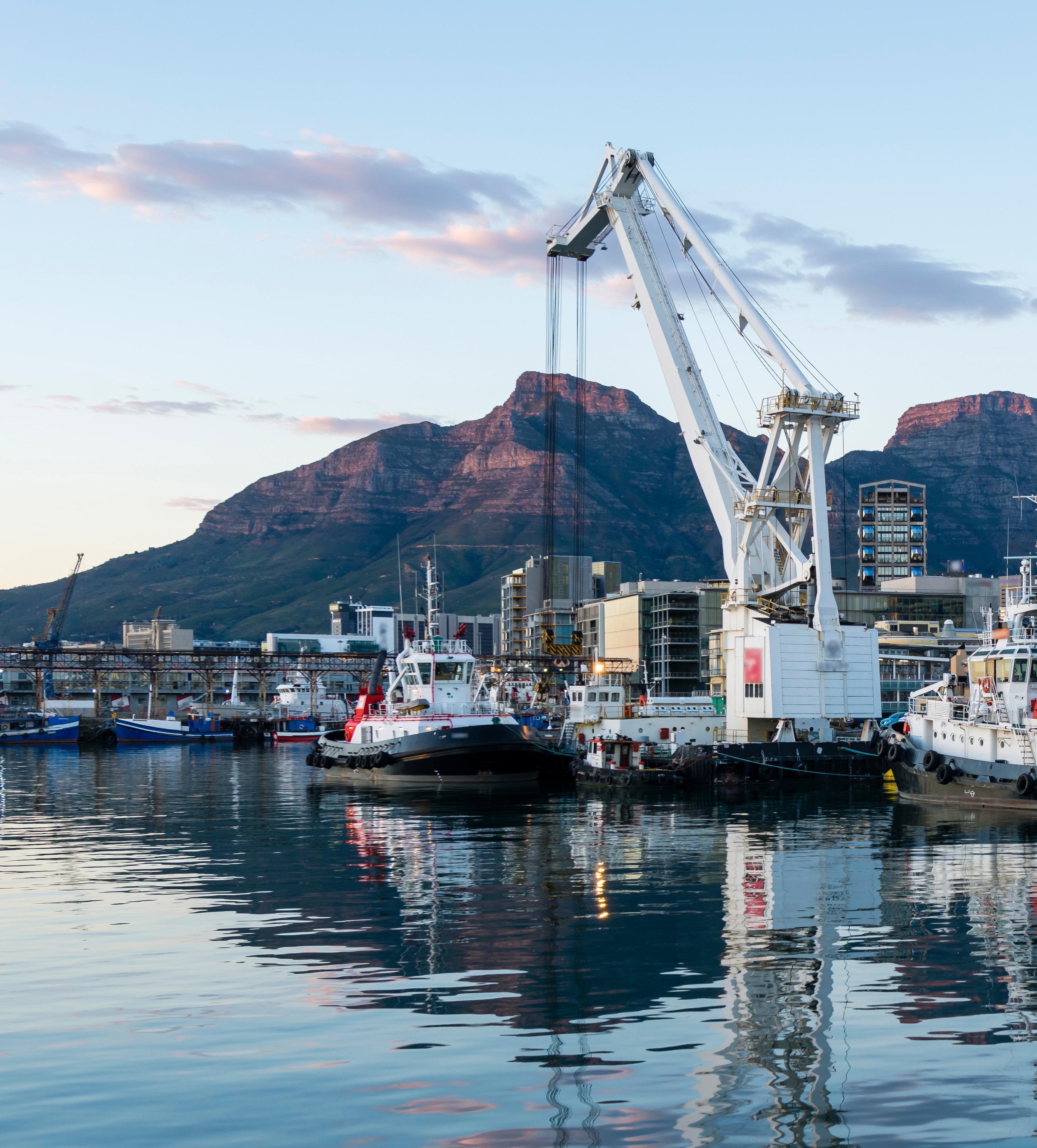

Africa’s ports race is hyped as ‘development’, but also creates pathways for plunder


The need for greater export capacity also drives port expansion projects across Africa.
Ports have long been integral to Africa’s connectivity with the rest of the world. Yet, over the last 15 years, a new stage in maritime infrastructure planning and development has begun. Between 2004 and 2019, over US$50 billion was spent on this infrastructure—roughly 13 times more than was spent between 1990 and 2004 (bit.ly/3V0Wsgn).
Ports reflect more than simple economic imperatives. They are crucial in creating and reinforcing social, political and cultural systems. Infrastructure can be a useful lens to understand what particular groups in society value and how political elites aim to structure the social order. Indeed, port investment makes visible the linkages and disconnections between different agendas (those of leaders, global capital and civil society).
In a recently published paper (bit.ly/3hxG755), we explored two key questions about port investment and construction. What explains the massive increase? And what does this tell us about the nature of economic growth and political change across Africa?
We argue that the latest phase of port infrastructure development—the ‘ports race’— is shaped by (and simultaneously shapes) three Africa-specific macro trends.
The first is reliance on the large-scale export of natural resources (‘extractivism’). The second is an embrace of state-led development strategies that privilege largescale infrastructure. Third is the repackaging of narratives that link economic growth and global connectivity. Elites do this to bolster their domestic power and legitimise processes that are often socially or environmentally destructive.
In essence, the ports race is the result of both new alliances between African political elites and global economic circumstances that favour large-scale infrastructure building. These may be drying up post COVID-19, however.
African countries have long relied on primary commodity exports. This system, which began during the colonial period, largely continues today. The majority of African economies are still set up around two production systems: the export of oil and minerals, or the export of tropical agricultural products (there are a few exceptions, including Morocco).
The ports race is symptomatic of a new pattern in national development.
African politicians are aiming to use the export of unprocessed resources and
commodities to develop pockets of domestic value-addition in certain strategic industries. This strategy has become ubiquitous under the umbrella of ‘resource-led development’. Yet, it creates the conditions for the continued plunder of African resources and for hugely environmentally or socially damaging processes.
A good example is Ghana’s US$2-billion bauxite-for-infrastructure agreement with Sinohydro, a Chinese multinational (bit.ly/3BGz6px). Bauxite will be processed domestically for export markets. But at least part of the Atewa forest reserve, where the bauxite is located, will be destroyed in the mining process (bit.ly/3hw8hNZ).
The need for greater export capacity also drives port expansion projects across Africa. Increasingly, states are seeking to attract capital and bolster their legitimacy at home and abroad by creating ‘safe spaces’ for investment.
For example, Djibouti has attracted over $4 billion for infrastructure development in the past 10 years alone. Yet, this has done little to reduce Djibouti’s poverty rates or improve employment levels. Instead, new infrastructure has served to gather international support for President Ismail Omar Guelleh’s repressive regime, as corporate and state actors present the port of Djibouti as a secure regional pivot for transshipments.
The domestic stability needed to attract capital to Djibouti was realised through the erosion of press freedoms (bit.ly/3WeVpdG), harsh crackdowns on dissent (bit.ly/3YrKuzu) and non-competitive elections. It is in the alliance between the interests of local political elites and foreign capital that the developmental effects of port projects are defined.
Due to rising levels of indebtedness (bit.ly/3WgdLew) and growing competition among African states to attract foreign investment, this is not a lasting solution.
The economic and political consequences of costly infrastructure projects falling short in delivering growth and development can be disastrous. For instance, loans may not be repaid, or funding could be directed away from projects with greater potential social impacts.
The ports race is a risky business. How, then, do African elites legitimise port development domestically?
They do it by associating infrastructure with modernity and connectivity. In essence, they create an idea of a future with high-tech port operations, smoothly paved roads and uninterrupted flows of goods.
Infrastructural visions are closely connected to extractivism and state-led development. They speak of ‘unlocking’ the potential of specific African regions by connecting them with global trade and capital flows. And they portray domestic peripheries as ‘unproductive’ and in need of infrastructure development.
Considering the number of large-scale maritime infrastructure projects currently under way in Africa, we view the ports race as an ongoing process. Major world events like COVID-19 and the Russian invasion of Ukraine could have an impact on it, though.
Not all port projects are harmful for growth and development. The developmental effects of ports and other maritime infrastructure are complex and varied. They depend on local factors and whether projects are tied to overarching plans.
For some countries, port construction or expansion may enhance the implementation of industrial policy frameworks by reducing transport costs and inefficiencies. Yet, this is not a given.
Moreover, construction of multiple ports in the same region attempting to gain the status of transshipment or gateway hubs means that some will certainly fall short. There will be severe political and economic consequences.
Ricardo Reboredo Assistant Professor International Relations and European Studies Metropolitan University Prague Elisa Gambino Fellow: International Relations London School of Economics and Political ScienceThe ports race is the result of both new alliances between African political elites and global economic circumstances that favour large-scale infrastructure building



The African Development Bank’s new report calls for bold policy actions to help African economies mitigate compounding risks

frica is set to outperform the rest of the world in economic growth over the next two years, with real gross domestic product (GDP) averaging around 4% in 2023 and 2024. This is higher than projected global averages of 2.7% and 3.2%, the African Development Bank (AfDB) Group states in its 2023 “Africa’s Macroeconomic Performance and Outlook” report, released in Abidjan in mid-January this year. With its comprehensive regional growth analysis, the report will be released in the first and third quarters of each year. It complements the bank’s existing annual “African Economic Outlook” report (bit.ly/3lMe67I) that focuses on key emerging policy themes relevant to the continent’s development.
The “Macroeconomic Performance and Outlook” report shows that estimated average growth of real GDP in Africa slowed to 3.8% in 2022, from 4.8% in 2021, amid significant challenges following the COVID-19 shock and Russia’s invasion of Ukraine. Despite the economic slowdown, 53 of Africa’s 54 countries posted positive growth. All five regions of the continent remain resilient, with a steady outlook for the medium term.
However, the report sends a cautionary note on the outlook following current global and regional risks. These including soaring food and energy prices, tightening global financial conditions, and the associated increase in domestic debt service costs. Climate change—with its damaging impact on domestic food supply and the potential risk of policy reversal in countries holding elections in 2023—pose equally challenging threats.
The report advocates bold policy actions at national, regional and global scales to help African economies mitigate the compounding risks.
In remarks during the launch, AfDB Group president Dr Akinwumi Adesina said the release of the new report came at a time when African economies, faced with significant headwinds, were proving their resilience. “With 54 countries at different stages of growth, different economic structures, and diverse resource endowments, the pass-through effects of global shocks always differ by region and by country. Slowing global demand, tighter financial conditions and disrupted supply chains therefore had differentiated impacts on African economies,” he said. “Despite the confluence of multiple shocks, growth across all five African regions was positive in 2022—and the outlook for 2023–24 is projected to be stable.”
Niale Kaba, Minister of Planning and Development of Côte d’Ivoire, said: “The release of this report by our bank at this time of the year is an excellent opportunity for Africa and its global partners. We need these regular
updates to assess our countries’ macro-economic performance and prospects. This reliable information will help decision-making and risk management for potential investors in Africa.”

Africa’s pre COVID-19 top five performing economies are projected to grow by more than 5.5% on average in 2023–2024 and to reclaim their position among the world’s 10 fastest growing economies. These countries are Rwanda (7.9%), Côte d’Ivoire (7.1%), Benin (6.4%), Ethiopia (6.0%) and Tanzania (5.6%).
Other African countries are projected to grow by more than 5.5% in the 2023–24 period. They are the Democratic Republic of Congo (6.8%), The Gambia (6.4%), Mozambique (6.5%), Niger (9.6%), Senegal (9.4%) and Togo (6.3%).
At the launch, economist Jeffrey Sachs, director of the Center for Sustainable Development at Columbia University, commended the report which, he said, showed that African economies are growing—and growing consistently.
Sachs, who is also United Nations Secretary-General Antonio Guterres’ Advocate for Sustainable Development Goals, added: “Africa can and will rise to growth of 7% or more per year consistently in the coming decades. What we’ll see, building on the resiliency we see in this report, is a real acceleration of Africa’s sustainable development so that Africa will be the fast-growing part of the world economy. Africa is the place to invest.”

The report advocates robust measures to address the risk. These include a mix of monetary, fiscal and structural policies including:
• Timely and aggressive monetary policy tightening in countries with acute inflation, and cautious policy tightening in countries where inflationary pressures are low. Co-ordination with fiscal policy will further strengthen the levers to ease inflationary pressures.
• Enhancing resilience by boosting intra-Africa trade, especially in manufacturing products, to cushion economies from volatile commodity prices.
• Accelerating structural reforms to build tax administration capacity and investments in digitalisation and e-governance to enhance transparency, reduce illicit financial flows, and scale up domestic resource mobilisation.
• Improving institutional governance and enacting policies that can leverage the private sector financing, especially in climate-proof and pandemic-proof greenfield projects—and mobilising Africa’s resources for inclusive and sustainable development.
• Taking decisive action to reduce structural budget deficits and the accumulation of public debt in countries facing a high risk of debt distress or already in debt distress.
All five regions of the continent remain resilient, with a steady outlook for the medium term.
Despite the confluence of multiple shocks, growth across all five African regions was positive in 2022, and the outlook for 2023–24 is projected to be stable:






Bolstered by favourable commodity prices, growth is estimated to have been the continent’s fastest at 4.7%, up from 3.6% in 2021.
Growth is estimated to have slowed to 3.6% in 2022 from 4.4% in 2021. This reflects decelerations in Côte d’Ivoire and Nigeria, the region’s two largest economies. Nigeria’s growth in 2023— though hit by COVID-19, insecurity and weak oil production despite higher international oil prices—could benefit from ongoing efforts to restore security in the restive oil-producing region.
Growth is estimated to have moderated to 4.2% in 2022 from 5.1% in 2021. However, it is projected to recover to the pre-pandemic average above 5.0% in 2023 and 2024. While the production structure in East Africa is relatively diversified, countries in the region are largely net importers of commodities. They thus bear the brunt of high international prices in addition to recurrent climate shocks and insecurity, particularly in the Horn of Africa.
Growth decelerated the most, to about 2.5% in 2022 from 4.3% in 2021. This slowdown reflects subdued growth in South Africa, as higher interest rates, weak domestic demand and persistent power outages weighed on the economy.
Growth is estimated to have declined by 1.1 percentage points to 4.3% in 2022 from 5.4% in 2021 because of sharp contraction in Libya and the drought in Morocco. Growth is projected to stabilise at 4.3% in 2023, supported by an expected strong rebound in the two countries and sustained growth elsewhere in the region.
In his presentation, AfDB acting chief economist and vice-president, Kevin Urama, observed that Africa is still a favourable destination for investments in human capital, infrastructure, private sector development and natural capital. “Africa has a significant role to play in driving inclusive growth and sustainable development globally. There are many smart investment opportunities in key sectors: agriculture, energy markets, minerals, health infrastructure and pharmaceutical industries, light manufacturing, transport and logistics, digital economy and more. The continent remains a treasure trove for smart investors globally.”
For more information and to download the report, visit bit.ly/3iLJF4C
Only 2% of the African penguin population remains in the wild.
Only 2% of the African penguin population remains in the wild.
Only 2% of the African penguin population remains in the wild.
For just R600, you can adopt and name an African penguin for yourself or as a unique gift for a loved one.
For just R600, you can adopt and name an African penguin for yourself or as a unique gift for a loved one.
For just R600, you can adopt and name an African penguin for yourself or as a unique gift for a loved one.

ADOPT -APENGUIN
ADOPT -APENGUIN
You can’t take it home but your donation will contribute to specialised rehabilitation, medication and fish feeds for an endangered African penguin in SANCCOB’s care.
ADOPT -APENGUIN
You can’t take it home but your donation will contribute to specialised rehabilitation, medication and fish feeds for an endangered African penguin in SANCCOB’s care.
DONATE and help SANCCOB save the endangered African penguin from extinction.
DONATE and help SANCCOB save the endangered African penguin from extinction.
You can’t take it home but your donation will contribute to specialised rehabilitation, medication and fish feeds for an endangered African penguin in SANCCOB’s care.
End seabird extinction. Together.
End seabird extinction. Together.
www.sanccob.co.za
www.sanccob.co.za
DONATE and help SANCCOB save the endangered African penguin from extinction.
The Southern African Foundation for the Conservation of Coastal Birds is a non-profit marine conservation organisation. 003-134 NPO | Registration No. 2001/026273/08
The Southern African Foundation for the Conservation of Coastal Birds is a non-profit marine conservation organisation. 003-134 NPO | Registration No. 2001/026273/08
End seabird extinction. Together.
Tel: +27 21 557 6155 | Fax: +27 21 557 8804 info@sanccob.co.za
Tel: +27 21 557 6155 | Fax: +27 21 557 8804 info@sanccob.co.za
www.sanccob.co.za
SANCCOB Saves Seabirds @SANCCOB SANCCOB
SANCCOB Saves Seabirds @SANCCOB SANCCOB


The Southern African Foundation for the Conservation of Coastal Birds is a non-profit marine conservation organisation. 003-134 NPO | Registration No. 2001/026273/08
 ©Emma Strumpman
©Emma Strumpman
©Emma Strumpman
©Emma Strumpman


Financial services like accounts, credit cards and retirement plans allow people to protect their savings, earn interest, borrow for big expenses like a house or medical bills, and even start their own businesses. This is why financial inclusion is mentioned in eight out of 17 of the Sustainable Development Goals (bit.ly/2K10Evi).
But opening and maintaining these kinds of accounts can be difficult when banks are difficult to reach. Across countries in Africa, only 33% of adults have an account at a bank or another financial institution ( bit.ly/3yPQtCM). Among the women, this rate is only 27%.

To solve this, some have proposed using digital technologies to reach the ‘unbanked’ (bit.ly/2EjDob9).
Services like mobile money, which allows people to use their mobile phones to make or receive payments, have become quite popular. In recent years, more than 157 mobile money operators like M-Pesa and Orange have taken off across the African continent ( bit.ly/3D8xVjK).
These have become even more popular for contactless communication during the COVID-19 pandemic. In response to the pandemic and lockdowns, the use of mobile money increased more than three times in Rwanda (bit.ly/3s4VLGK). Many governments in sub-Saharan Africa waived mobile money fees and increased transaction limits to encourage use (bit.ly/3F0TjZw).
This means people who cannot use these digital services are being left behind as the financial system evolves. My research (bit.ly/3gdcIw5) across countries has found evidence for significant barriers that contribute to inequalities in who is able to use digital financial services. These barriers include
lack of access to a mobile phone, expensive mobile airtime, lack of financial literacy, and the infrastructure for the reliable service needed to make financial transactions.
Governments and service providers will have to remove these barriers before access to finance can become more equal.
My research analyses the data from the demographic and health surveys in 2016 and covers Senegal and Tanzania, as well as the Philippines and Nepal. The surveys asked women whether they had a financial account and whether they used a mobile phone for financial transactions. They also provided the locations where survey respondents live.
This survey is the first to provide crosscountry data on both use of traditional finance and use of digital financial services, along with other characteristics of households like wealth and education. I linked this to other databases containing the locations of infrastructure, like mobile phone towers and physical banks, to complete my analysis.
Using various statistical and econometric methods, my research found that most banks and their users were clustered in major cities like Dakar and Dar es Salaam.
Inequalities were not only geographic. Use of traditional financial institutions was highest among the wealthy and well-educated. Those in the wealthiest 20% of the population were up to 21 percentage points more likely to use traditional finance than those in the poorest 20%. They may have better knowledge about financial matters or be better targeted for the products offered by commercial banks.
Both dimensions of inequality, by location and by wealth or education, indicate the need for new ways to reach remote areas and people otherwise excluded from the financial system.
Use of traditional financial institutions was highest among the wealthy and well-educated.
Turning from physical banks to digital banking, I found that mobile phone ownership was much higher than traditional finance use. Mobile phone ownership reached 61% in Senegal and 51% in Tanzania, while traditional finance usage was only 7% and 24%, respectively. Mobile phones were much less unequal than traditional finance. This is why many have hoped that delivering financial services through mobile phones could be a promising avenue for eliminating inequality in access to finance (bit.ly/3eEZCYi).
But despite high rates of mobile phone ownership, I found that mobile network quality and mobile phone service were not equally spread. Mobile phone towers were concentrated in the same major cities as banks were. In rural areas, towers were spread thin and were of lower quality, so service may become poor and unreliable. Analysing data on mobile network download speeds showed that connection could be slow outside major cities.
In addition, perhaps because access to these mobile networks can be expensive (bit.ly/3TfhGaf), the use of digital financial technologies was also concentrated among
the wealthy and well-educated, just as was the case for traditional finance. Those in the wealthiest 20% of the population were up to 16 percentage points more likely to use digital finance than those in the poorest 20%.
My findings are consistent with other research that has highlighted the spatial clustering of financial institutions. A detailed study of Senegal’s banking sector published by the International Monetary Fund (bit.ly/3s7gdHe) summed up a similar finding: 63% of automated teller machines and 64% of points of service for traditional financial institutions in Senegal were located in Dakar.
In a 2020 survey (bit.ly/3TuwVfl) covering Tanzania alone, 19% of those who did not use a bank said this was because it was too far away. Another 37.5% said they did not have enough money to justify it, indicating that financial services were seen as costly and difficult to access.
Others have confirmed that mobile phones themselves can still be very expensive and, therefore, unequal. In Tanzania, even a basic phone costs one-20th of annual income for some (bit.ly/3TvBYfj), and a smartphone can be one-sixth of annual income. Then there is
the cost of network access. In Senegal and Tanzania, one gigabyte of mobile broadband costs 10.2% and 8.7%, respectively, of average monthly income (bit.ly/3TcWmST).
Other researchers have shown that similar inequalities persist for cash-in or cash-out points, where users can exchange cash for mobile money. Over 47% of mobile money access points in Senegal are in Dakar (bit.ly/3TC0XxT). Almost 15% of Tanzanians do not live within 5km of a financial access point of any kind (bit.ly/3Tc3oqR).

To eliminate inequality in access to finance, providers and governments must do more than simply offer digital financial services. They must improve the infrastructure for strong mobile networks, even in remote areas. Improving financial literacy and reducing the costs of digital financial services will also help these technologies reach those who have been excluded from the financial system.
Laura Caron PhD Student: Economics Columbia UniversityFinancial services were seen as costly and difficult to access

ailure is not pleasant, but it is inevitable. And often, it is a stepping stone on the way to success. This is especially true in entrepreneurship. Given the considerable degree of uncertainty and ambiguity associated with starting and running a business, failure is a common phenomenon (bit.ly/3YIahTO).
For the last decade, I have studied entrepreneurs and the keys to their success (bit.ly/3I6hPIQ). Unsurprisingly, many have failed more times than they have succeeded. While failure may initially be a blow to your confidence and even put you in financial trouble, it is not the end of the road. Some of the greatest innovations are based on several failed attempts.
One of the entrepreneurs I studied was the founder of a pharmaceutical company in Nigeria (bit.ly/3k8NsJT). Keen to set itself apart from the competition, this company started out by investing in niche drugs for the elderly. After a couple of months, it became clear there was no market for it and the business suffered a significant loss. Instead of giving up, the company conducted more market analysis
and identified its location as the problem. By moving, it grew to be one of the most successful retail outlets in the region.
Failure means there is an opportunity to grow and do something better. It should be viewed as a challenge and a minor setback, not necessarily a sign that you’re in the wrong field or that your goals are unreachable.
Indeed, entrepreneurs often stress that taking risks is important to the success of their business.

Sir James Dyson struggled for five years to make the world’s first cyclone vacuum cleaner work (bit.ly/3YWd6As). It took him 5 126 prototypes before number 5 127 succeeded. In the meantime, he had gone into debt and his wife was growing vegetables and raising chickens to get enough food to support the family. He took significant risks in his business and even signed his house to the bank. Now a multibillion dollar company, James Dyson insists that although its finances have changed dramatically, his company’s spirit of risk-taking has stayed the same.
It is worth noting, however, that despite their propensity to take risks, entrepreneurs tend to be analytical and calculative about this. Before making decisions, they consider the probability of a loss and how it could be minimised. In other words, preparing to fail can help mitigate its effect.
Entrepreneurs know that failure is sometimes necessary—here’s what we can learn from them


Failure means there is an opportunity to grow and do something better.
A 2017 biographical analysis of entrepreneurs looked at the important role of resilience in their success (bit.ly/3lO1OzP). To an entrepreneur, resilience is the ability to anticipate possible risks, cope effectively with unforeseen experiences, and adjust to changes. Successful entrepreneurs are usually good at picking themselves up.
For you to be resilient, failure needs to be viewed as an opportunity to reevaluate and reorganise your past decisions. It is important to have a backup plan.

Several entrepreneurs I interviewed (bit.ly/3I6hPIQ) shared that they draft out plans and anticipate changes in their business. The plan provides reassurance and a map to try again if they do fail. Some of these entrepreneurs had big customers on which the profitability of their business depended. They drafted out plans considering the impact on their business if they were to lose those customers. Would the business survive? What effect would it have on their profitability? What measures could be put in place to reduce the impact? These questions guided them in their plans, and could inspire your thinking before you take a risk.
As an entrepreneur, it is important to recognise opportunities to grow or reach a new market. Again, failure can help with this mindset. Sometimes being successful makes you complacent: By doing the same thing repeatedly, you don’t learn how to grow and improve. Although failure can be a hiccup, it opens your mind to new opportunities and perspectives. By failing, you learn how you can do things better.
Even great companies understand the value of failure. When Coca-Cola introduced the “new Coke” in 1985, the fiasco cost the company millions. But 10 years later, then-CEO Roberto Goizueta described it as the best thing that happened to Coca-Cola (bit.ly/3xza6xU). The company learnt from this and since then has provided other versions of the product while keeping the existing “classic Coke”.
Failure can affect entire companies or even economies. Take the 2008 financial crisis, which caused recessions in several countries (bit.ly/3S9Y47T). While, of course, not every issue raised by the crisis has been solved, the aftermath did result in reams of new legislation, the creation of new oversight agencies, and better structures to prevent similar failures from happening in the future.
More stringent measures have been put in place to ensure the finance sector is more fiscally responsible and regulated. International laws have been introduced to make senior management in banks more accountable (bit.ly/3YZvIPS), while remuneration rules now better align incentives and rewards to discourage misconduct.
In the United States, the Dodd-Frank Wall Street Reform and Consumer Protection Act (bit.ly/3k9kjy3) ensures stability and oversight
of the financial system. In the United Kingdom, the Financial Stability Board (bit.ly/3YZvIPS) was created to monitor and address risks from institutions and activities across countries. Capital requirements on large banks are now several times higher than before the 2008 recession, and complexity in derivatives markets has been reduced.
If nations can fail, do not be deterred when you do. Rather than running away, embrace and learn from it. In the world of entrepreneurship, there will always be change and turbulence. Those who ‘fail forward’ and learn from their mistakes will eventually be successful.
Christian Harrison Reader in Leadership School of Business and Creative Industries University of the West of Scotland
Despite their propensity to take risks, entrepreneurs tend to be analytical and calculative about this.




Employees reported an increase in robotisation levels in their companies over the last two years.


Today, robotics are used together with industrial control systems and other information technology to handle production processes, replacing manual labour and improving efficiency, speed, quality and performance.
Kaspersky conducted a study to learn the opinion of employees of manufacturing companies and other large organisations around the world about the consequences of automation and increased use of robots. The goal was to see what employees think about the security of robots and automated systems in their companies. The survey included respondents from Saudi Arabia, United Arab Emirates, Turkey, Egypt and South Africa.
Employees reported an increase in robotisation levels in their companies over the last two years. Thirty-three percent of employees from South Africa said their organisations already use robots, and 39% of local organisations plan to use them in the near future.
Research showed that people expect job loss because of robotisation. The better robots become at different tasks, the fewer jobs will remain for humans. The majority of employees surveyed in South Africa (92%) believe robots will eventually replace humans in their industry.
As robots are advancing in all market sectors, humans need to receive new knowledge and skills not to lose their job to robots. And they are ready to do so: Among those who think their jobs could be replaced by robots, the majority (75%) are willing to learn new skills or improve their existing skills and expertise.
At the same time, many employees remain optimistic in view of robots taking away jobs. They think robot adoption will make humans’ roles safer and intellect-demanding, along with increasing the efficiency of production. Forty-eight percent believes that enough new jobs will be created to counter the loss of jobs to robots. More jobs will emerge for programmers, data scientists and engineers—these people will drive robot adoption in the years to come.
Another important finding was that cybersecurity risks increase because of robotisation. The majority of local respondents (89%) believes robots can get hacked, and 53% know of such incidents in their company or other local companies.
Respondents are split in their assessment of how protected robots are: Almost half of employees surveyed in South Africa (42%) believe that not enough cybersecurity measures are in place to protect the robots in different industries.
“More and more tasks are done by robots, and they are potentially vulnerable to cyberthreats. Kaspersky sees its mission in
ensuring cybersecurity remains at the forefront of robot technology adoption, helping to tackle the challenges and capitalise on the opportunities that robotisation presents,” comments Emad Haffar, head of Technical Experts at Kaspersky.
“In our research, we asked the respondents to judge not only how convenient and efficient robots are to use in production, but also how safe they are. It turned out that many employees believe that using robots causes risks. Robots are going to become the prime vector for cyberattacks in the coming years, and they need protection here and now.
“Before one integrates robots into production, one needs to guarantee network intrusion robustness and overall network security. It’s also important to ensure protection of robotic controllers, automation systems and supply chains. Dedicated solutions like Kaspersky Industrial CyberSecurity (bit.ly/3UVSDd9) may become an efficient assistant for protecting robotics in production,” he suggests.
To keep your industrial computer systems protected from various threats, Kaspersky experts recommend:

• Conducting regular security assessments of operational technology (OT) systems (bit.ly/3AQxycl) to identify and eliminate possible cybersecurity issues.
• Establishing continuous vulnerability assessment and triage as a base for effective vulnerability management process. Dedicated solutions like Kaspersky Industrial CyberSecurity may become an efficient assistant and a source of unique actionable information, not fully available in public.
• Performing timely updates for the key components of the enterprise’s OT network; applying security fixes and patches or implementing compensating measures as soon as it is technically possible is crucial for preventing a major incident that may cost millions due to the interruption of the production process.

• Using industrial endpoint detection and response (EDR) solutions such as Kaspersky Industrial Cybersecurity for Nodes with EDR for timely detection of sophisticated threats, investigation and effective remediation of incidents.
• Improving the response to new and advanced malicious techniques by building and strengthening your teams’ incident prevention, detection and response skills. Dedicated OT security trainings (bit.ly/3Vffh0f) for IT security teams and OT personnel is one of the key measures helping to achieve this.

Southern Africa’s largest privately owned vibrating equipment manufacturer, Vibramech , has achieved record sales after celebrating its 45th milestone year.
will enable the monitoring of all aspects of Vibramech vibrating equipment 24/7, providing continuous vibration monitoring of the equipment’s operational parameters, such as vibration frequency, stroke, angle of the motion and temperature to detect and diagnose machine faults. Such monitoring provides added insurance for machine performance.
Vibrating equipment plays a crucial role in minerals processing, and is widely used for classification, dewatering, medium recovery, scalping, trash removal, grading and desliming. Due to this crucial role, early fault detection, diagnosis and analysis become important to continuously reduce and eliminate costly, unscheduled downtime and unexpected breakdowns.

The company wishes to paytribute to all of its clients forthis affirmation of their trustin Vibramech’s equipment. The personal touch added by being owner-managed allows for greater flexibility in catering for its customers’ unique requirements and considerably improves turnaround times in the design phase.
Vibramech supplies its equipment to mining and mineral processing industries throughout Africa, Eurasia, Australasia, North and South America. The company’s equipment is operating in processing plants, ocean vessels and mining operations world-wide. Vibramech has extensive experience in gold, diamond, coal, iron ore, manganese, platinum, chrome, nickel, uranium, copper, lithium, mineral sands and aggregate operations.
As an Original Equipment Manufacturer (OEM), Vibramech consistently produces a proven and comprehensive range of vibrating equipment, including, but not limited to:
multislope (or banana) screens, horizontal and inclined screens, dewatering screens, primary and secondary sizing screens, crusher product screens, degrit screens, floats and sinks screens, classifying screens, XRT and X-ray prep screens and feeders, DMS feeders, grizzly feeders, pan feeders, tubular feeders and grease tables.
All equipment is manufactured inhouse by Vibramech at its 32,000m2 premises in Chamdor, 35 km West of Johannesburg, South Africa. Almost every piece of equipment is tailor-made to suit a client’s specific requirements, from both a plant layout viewpoint and process considerations.
Vibramech also celebrates the successful roll-out of their Vibrasure online and remote monitoring system. Vibrasure
This system employs structural and bearing sensors designed with the latest technology. All sensors are IP69K rated and have long-life integral batteries that can withstand the harshest of conditions, and it reports key parameters to a cloud based platform, and those values can be trended over time and provide significant benefits to optimise the performance of vibrating equipment.
Vibramech and/or their clients can, as required, receive real-time notifications on vibration patterns and bearing temperatures via email, mobile phone messaging or PLC. This will eliminate the occurrence of unplanned downtime due to normally unnoticed detrimental operational issues. This will add to the renowned and reliable Vibramechequipment, with clients sleeping sound knowing that Vibramech are maintaining a constant watch on machine performance, resulting in even improved machine longevity.
igital agricultural services have proliferated across Africa over the last decade (bit.ly/3HeZaM7). Most are services that work on mobile phones, although more advanced technologies are in use, too: like satellite images, sensors, blockchains and big data analytics. The services offer access to information, markets and financial products.
Kenya is at the forefront of this development in Africa. The country is home to numerous service providers that seek to solve problems in food and agriculture using digital technologies. In 2020, the GSM Association counted 95 such services in Kenya (bit.ly/3uqWLpR). This is around twice the number found, for instance, in Nigeria, the country with the second highest digital agricultural services prevalence in Africa. Providers range from small startups to large companies that mainly offer advice,finance and market linkage.
But scaling up these solutions remains a challenge.
A study (bit.ly/3HeZaM7) on digital agriculture in subSaharan Africa showed that only a few service providers managed to register more than one million users. In Kenya,
it is estimated that only 20% to 30% of farmers use a digital agricultural solution. This is better than other countries in the region—but still low.
In our research (bit.ly/3iDAHWw), we examined how to support the scaling of digital agricultural services in Kenya. We found that uptake could be increased by building digital bridges (bit.ly/3FrMro3) in the form of digital platforms that bundle such services for easy access and use. But human bridges (bit.ly/3iIfLOh) are also needed to link service users and providers. The insights from the research can help service and platform providers design and scale solutions that suit different users. They can also inform policies and investments needed to create the conditions for scaling these services.
We conducted a survey (bit.ly/3FrMro3) of 758 likely users of hypothetical digital platforms that would aggregate digital agricultural services in Kenya. All the potential users had access to the Internet or basic data connectivity. Respondents were contacted via relevant Facebook groups and invited to complete the survey online.
A second in-person survey (bit.ly/3iIfLOh) shed light on how agricultural intermediaries in Kenyan value chains use digital technologies in their work. These included 296 input dealers, output dealers and extension agents.
Our research offers the first comprehensive study of the digital capabilities of agricultural intermediaries. More commonly, studies focus on agricultural producers.

Digital solutions are boosting agriculture in Kenya, but it’s time to scale up


In Kenya, it is estimated that only 20 % to 30 % of farmers use a digital agricultural solution.
Our research showed that likely users would see value in aggregator platforms if they made digital agricultural services easier to find and assured their quality. They would also like platforms to be open to a wide range of value chain actors with diverse levels of digital skills. Our findings also highlighted that human interaction still matters. It should complement digitally enabled contacts and transactions.
Aggregator platforms can help scale up digital agricultural solutions in a number of ways:
The platforms could make digital agricultural services easier to locate and use. This would help users navigate the often confusing array of services on offer. For instance, platforms could provide a one-stop shop for a diverse range of services that are easily searchable and only require a single registration and payment system. They would need to be usable with different types of digital technologies and skills.
Aggregator platforms would be valuable if they could guarantee the quality and reliability of digital agricultural services. This would build trust in the services. They could do so, for instance, by setting, monitoring and enforcing quality standards for participating service providers or introducing user rating systems. Human intermediaries could also play an important role in building trust.
Users would like aggregator platforms to include a wide range of value chains and actors. Through their networks, intermediaries could get more actors to use aggregator platforms. Of course, aggregator platforms do not offer all the answers to scaling digital agricultural solutions. They would need a supportive policy environment. But there are gaps, including: insufficient digital skills—this needs to be addressed by integrating related training at all levels of education; and poor technology infrastructure—this would require expanding access to high-speed mobile networks, affordable smartphones and reliable electricity, particularly in rural areas.
Various factors (bit.ly/3iDBd6U) have contributed to Kenya’s leadership role in digital agriculture in Africa. Mobile network infrastructure expanded early on, supported by government policies that attracted the necessary investments and fostered competition.
Digital business development was largely driven by dedicated individuals, innovation hubs and so-called angel investors. Together, they created a conducive innovation environment for local startups developing digital solutions for a technologysavvy customer base of relatively welleducated users.
The widespread adoption of M-Pesa also played an important role. It facilitated the provision of digital agricultural services that require financial transactions.


The country needs to build on these successes. The digital transformation of Kenya’s agriculture will become a reality if it can link viable digital solutions providers with potential beneficiaries. That requires digital bridges connecting diverse services and users. But it will also require human bridges to narrow the technological and skill gaps, to build trust in service provision and to reach those who are not yet connected.
Aggregator platforms that integrate agricultural intermediaries into their design are one avenue for building such bridges. This will happen if they understand the different demands and capacities of their users. The design and marketing of digital agricultural services will have to match users’ needs and abilities.

Similarly, public and private investments in skills, infrastructure and the business environment are crucial for such platforms to fulfil their potential.
Heike Baumüller Senior Researcher Center for Development Research University of Bonn John Kieti PhD Researcher University of NairobiJeehu (Pty) Ltd is a black women-owned multidisciplinary engineering company specialising in engineering and mining services. It provides quality upskilling short learning programmes in the fields of engineering, business management and life skills. These services are offered to industries, mining houses and government departments around South Africa and beyond—and particularly to youths, underdeveloped and developing communities.

JEEHU ENGINEERING
Design
Design, refurbishing and supply of mechanical structures; Civil construction, concrete work and building work; Steel structural work; Pipe routing design and installation;


Electrical work—installation of HV, MV and LV and maintenance; General engineering and plant maintenance (manufacture and replacement of chutes, liners, belt splicing etc.);
General construction
Mining
Mine rehabilitation; Fluid management—slurry and dewatering; Deep-well borehole equipping; Drilling; Rendering of other mining services
JEEHU SUPPLIES
Oils and all lubricants; HDPE pipes and all dewatering accessories; Pumps, flow meters and valves

JEEHU MAINTENANCE SERVICES
Jeehu employs a team of dedicated researchers who take great care to search, document and implement the world best practice in the field of plant maintenance. Due to the calibre of staff, the identification of client problems, corrective action and execution of the required task according to international norms and standard is easily obtainable. The design team is well trained for any modification of plants, fabrication and installation of new designs.
JEEHU TRAINING CENTRE
Jeehu is dedicated to upskilling engineers, technologists, technicians, project managers and business managers. The Training Centre offers a range of well-researched and thought-out short courses that will contribute immensely to the professional development of thousands of individuals who will apply the expertise gained from these courses to their own systems and facilities.

Jeehu provides dedicated, effective and efficient engineering and mining

There is unshakeable optimism around the growth potential of African economies as a whole and specifically the digital economy. The rapid rise of tech hubs and startups in urban areas in sub-Saharan Africa in recent years seems to support that (bit.ly/3Diw4t3).

Many observers, therefore, have identified the digital economy as an important driver of longterm growth in Africa, despite current global challenges.
The reality is that experiences with promoting the digital economy in sub-Saharan Africa have been mixed. Following great hopes in the promise of ‘digital connectivity’ in the early 2000s, many scholars have observed ( bit.ly/3sd26Qt) that the ability of African businesses to turn connectivity into success in global markets has been limited.
The future of Africa’s tech scene is equally uncertain. Despite great potential, the tech startup scene is underfunded (bit.ly/3Diw4t3), and several tech hubs have had to shut down due to bankruptcy (bit.ly/3s5hmyP).
How can we explain this gap between promise and reality with digital economy investments in sub-Saharan Africa? And how can investments lead to more sustainable growth?
In my recent study (bit.ly/3sc8Vli), I analysed the historical case of global business services in Kenya and South Africa to examine why governments and businesses make certain investment choices over time, and how they can learn to be more in tune with the context of sub-Saharan Africa.
The main finding is that global templates of success, such as meeting global standards and developing scalable business models, often stand in the way of realising the full potential of locally specific skills and business opportunities. As I show below, this has fundamental implications for today’s digital startup scene in sub-Saharan Africa.
The promise of the digital economy has always been a double-edged sword. Many global consulting firms and international organisations initially saw digital connectivity as a key driver for the future growth of African economies (bit.ly/2DWQiIF). Even today there is a strong belief that you just need to have the right infrastructure in place (bit.ly/3s5hmyP) for the digital economy to grow and create jobs.
This optimism led the Kenyan government in 2007 to define business process outsourcing (BPO) as a central pillar in its Vision 2030 (bit.ly/3CEpSKa). The assumption was that Kenya had the talent and Internet connectivity to copy India’s success in this business. In a similar fashion, South Africa’s business leaders put their hopes in call centres, which had previously generated many jobs in India and the Philippines.
But these hopes turned out to be flawed. Digital businesses are often easy to get
into but difficult to compete in—especially on the global stage (bit.ly/3MKotWU). To win client contracts in a highly standardised digital business, such as call centres and tech support, you need to be scalable. Yet, to succeed with scale you also need to be costcompetitive and develop a strong reputation.
Kenyan business process outsourcing services were neither scalable nor competitive. As a result, they soon went out of business (bit.ly/3VB1Kki). A famous example was KenCall (bit.ly/3eFeWUO), a once-hyped call centre that could not keep up with global competition.

South African call centres had the scale. But competition from the Philippines put enormous pressure on them.
The current tech startup scene seems to be facing similar challenges: scalability of new ventures has been a serious issue (bit.ly/3Diw4t3). In part, this is due to poor support infrastructure as well as global competition.
Experiences with promoting the digital economy in sub-Saharan Africa have been mixed

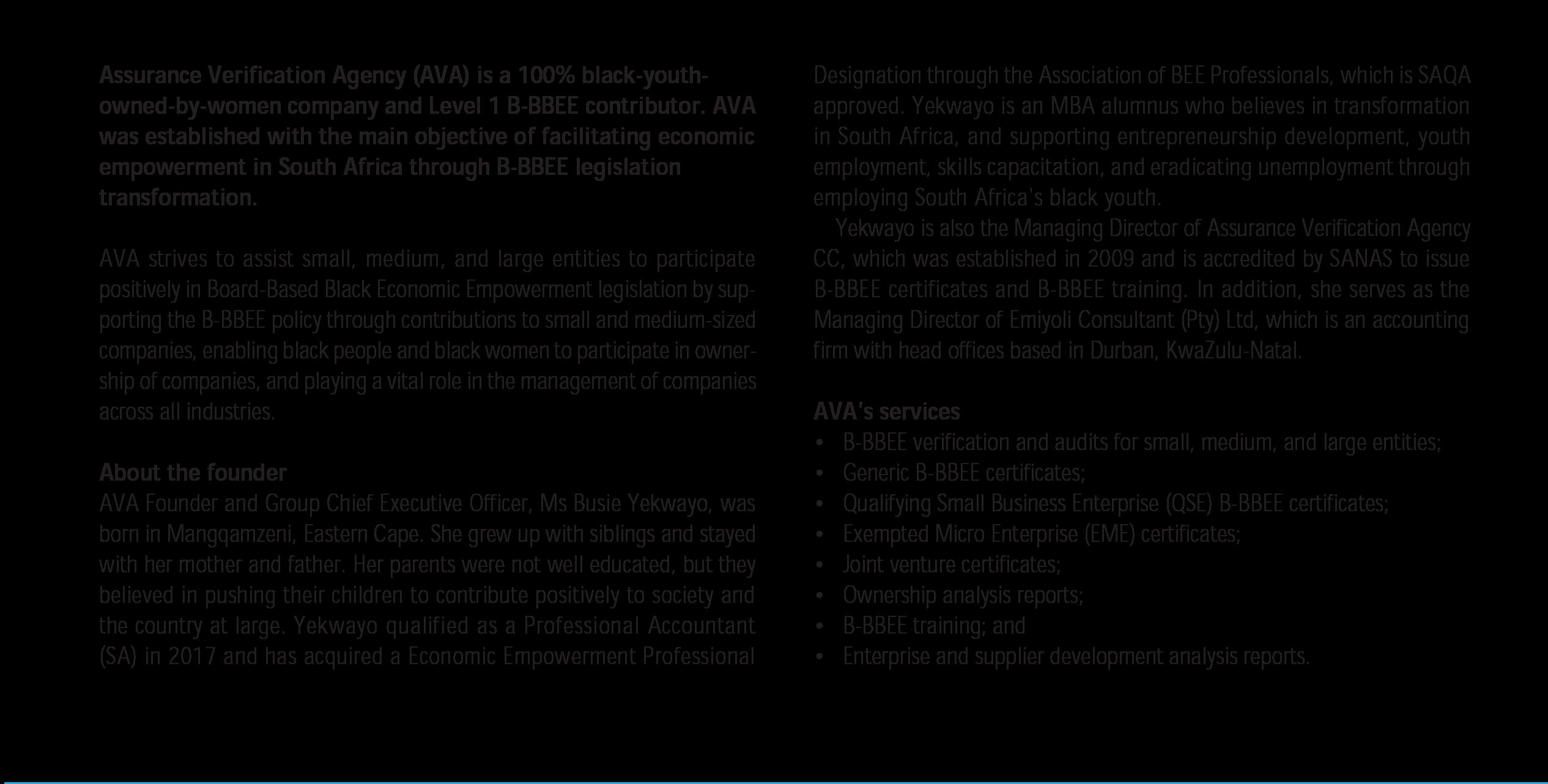


In the case of global business services, Kenya and South Africa learnt their lesson. Initially, trying to meet global standards and keep up with global rivals was seen as desirable in the eyes of governments, businesses and the general public. But as competitive pressure grew, the agenda changed (bit.ly/3T9H9Su) from competing globally to avoiding global competition, from meeting global standards to focusing on locally specific skills and resources.
As a result, both economies invested into niche business segments. For example, Kenyan BPO providers increasingly focused on local and regional clients rather than trying to compete for clients from Europe and North America (bit.ly/3ET3saF).
In the case of South Africa, business services increasingly diversified into more specialised areas such as legal process outsourcing (bit.ly/3yQZxro), to lower global competitive pressure.

Also, both economies promoted so-called impact sourcing (bit.ly/3ET3K1f), which focuses on hiring and training disadvantaged young people from slums and rural areas, combining employment opportunities with community impact. What these niche strategies have in common is that they are less subject to global competition, and that they rely on locally embedded resources such as local client connections and untapped labour pools in local communities (bit.ly/3ET3RKv).
Some of these niche models emerged even before they became fashionable. In fact, their ability to survive against the mainstream gave them a competitive edge, allowing them to survive in the long term.
A similar dynamic may be unfolding with today’s tech startup scene in subSaharan Africa.
It is still fashionable today to promote tech startups and tech hubs based on models from the global North. But new, alternative models may be emerging which may be much more sustainable. For example, studies suggest African businesses are traditionally much more community-focused. Businesses exist to support communities rather than just to make profit (bit.ly/3CBUvzW). Research shows that while African tech hubs often ‘fail’ to scale up businesses in the Western sense, they are very effective in providing individual growth opportunities and in expanding and deepening community connections (bit.ly/3s6UDCB). Such experiences suggest concepts of ‘scalability’ and ‘growth’ may take on a range of meanings in sub-Saharan Africa, and that the global North should expand its horizon beyond its narrow conception of these terms to really understand Africa’s economic potential.
Recent reports may be right that the digital economy carries much potential in helping sub-Saharan Africa overcome current economic challenges toward sustainable growth. But maybe it is not because the digital economy can merely drive economic growth in the conventional sense, but because it can expand regional business networks and local communities, and make them more resilient against global economic threats.
Manning Professor: Strategy and Innovation University ofStephan
Sussex
Scalability of new ventures has been a serious issue

The Southern African Energy Efficiency Confederation (SAEEC) is the local recognized chapter of the Association of Energy Engineers® (AEE) and the first chapter established in Africa. AEE service more than 100 countries.


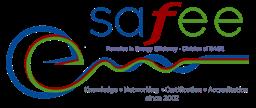


14 MARCH 2023
SAEEC Energy Awards and the Association of Energy Engineers (AEE) Certification Ceremony where we honor engineers and engineering companies for their dedication to the saving of energy.
> Energy Professional of the Year
> Young Professional of the Year
> Female Professional of the Year
> Energy Service Company of the Year
> Commercial Corporate Company of the Year
> Industrial Corporate Company of the Year
> Commercial Energy Project of the Year
> Industrial Energy Project of the Year
> IInnovative Project of the Year

> Energy Innovator of the Year
> Energy Management Leadership Award (ISO 50001 Registered)

20-21 SEPTEMBER 2023
SAEEC 18th Annual conference.

Theme: Energy Efficiency in Sustainability and Development Goals in 2023
www.saeeconfed.org.za
